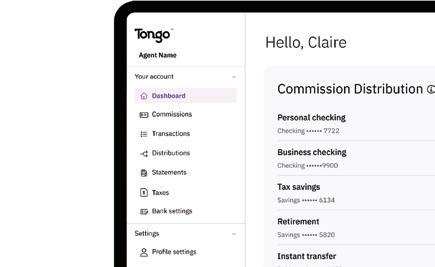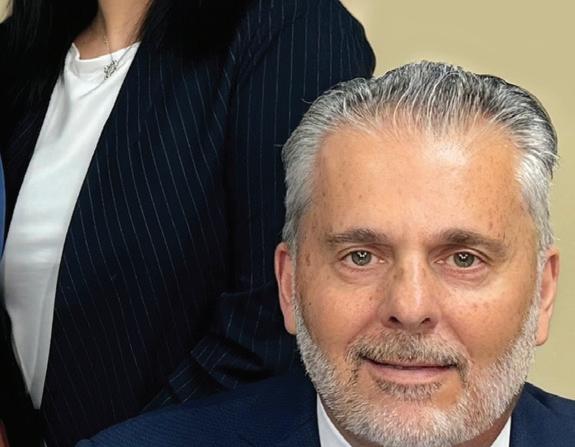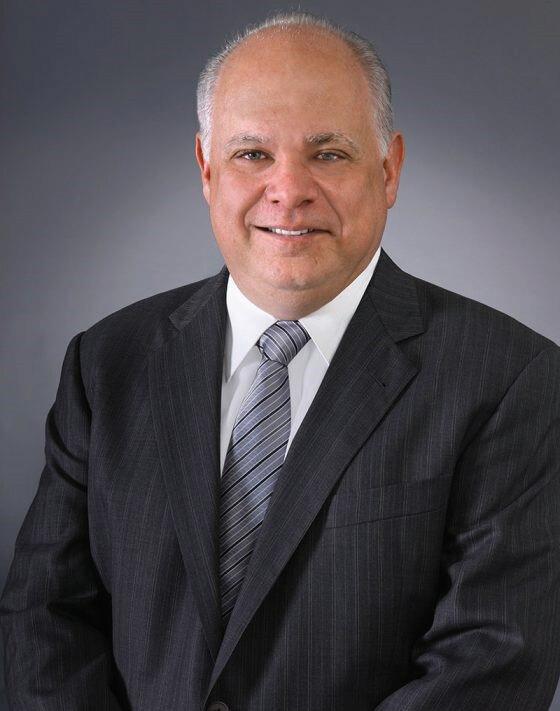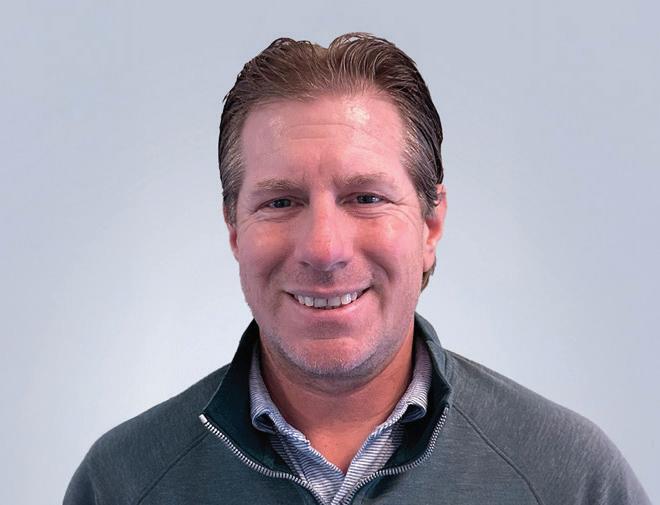
























BY JAMIE KATCHER, JLL




For decades, we have built a real estate practice unparalleled in the US. Now, as the global legal powerhouse HSF Kramer, we are so much more. As the only law firm ranked in Chambers Band 1 in the US, the UK and Australia, we continue to transform skylines and reshape landscapes. Please visit our website to learn more. Kramer Levin is now HSF Kramer





























Holland & Knight’s New York Real Estate Practice Group and Real Estate Capital Markets Practice Group successfully closed deals worth more than $11.35 billion in 2024. From acquisitions, dispositions, development, condominium and cooperative formation and operation to hospitality, financing, leasing, land use and real estate capital markets, our attorneys do their utmost to deliver clients with exceptional results across all sectors.
Acquisitions and Dispositions: $1.93 billion
Financing: $4.1 billion
Leasing: $3.2 billion
Land Use: $290 million



Defaulted Loans, Workouts and Liquidations: $1.83 billion
www.hklaw.com
Stuart M. Saft, Partner | Real Estate Practice Group

Keith M. Brandofino, Partner | Real Estate Capital Markets Practice Group New York, NY | +1.212.513.3200

















































































EDITORIAL
Editor
Debra Hazel
Director of Communications and Marketing
Penelope Herrera
Director of Newsletter Division
PRESIDENT/CEO
Jeff Mann
ART
Art Director
Virginia Sanchez
Cover Photography Adobe
Frank DeLucia
Technology Consultant Eric Loh
Cheri Phillips Distribution Mitchell’s Delivery Service
Amanda Goldsmith
Jamie Katcher
Kris Kiser
Bob Knakal
Joseph Mecagni
Ira Meister
Phillip Ross
Stuart Saft
Kenne Shepherd
Carol A. Sigmond
Simon Soloff
DIGITAL MEDIA
Designers
Virginia Sanchez
Editors
Debra Hazel
Penelope Herrera
Rose Leveen
Cheri Phillips
Web Developer
CS Designworks
West Coast Office: 578 Washington Blvd., Suite 827
Marina Del Rey, CA 90292 866-306-MANN (6266) mannpublications.com



East Coast Office: 450 7th Ave, Suite 2306 New York, NY 10123 212-840-MANN (6266)









For 50 years, R&E's attorneys have been instrumental in driving the firm's success, helping R&E achieve remarkable milestones and putting the firm at the forefront of the

One of the most fascinating aspects of publishing real estate and apparel business magazines is finding the crossovers between what at first glance would be two very different industries. Of course, retail has a strong impact on both, but another common tool has emerged with exciting effects — artificial intelligence (AI).
That’s why I’m extremely excited that the cover stories of both the Mann Report in your hands (or on your screens) and Fashion Mannuscript’s (FM) June/July issue offer comprehensive overviews of the ways AI are transforming these industries. Both are a must-read for anyone interested at in the future — and the present — of business. You can find FM at mannpublications.com — and think about a subscription.
Our events section also shows wonderful ways in how we get together to network, honor each other and do good for our community. Congratulations to the Real Estate Board of New York’s Deal of the Year honorees, to my dear friend Jeffrey Gural for being honored by NYC Outward Bound, our other gatherings and to all who organize these spectacular events. (Trust me, I know how hard they are.)
This is our annual Summer double issue, so I hope you enjoy a break, whether it’s in the Hamptons, the Jersey Shore, the mountains or overseas — our team certainly will!
See you in August!

“It is not the strongest species that survive, nor the most intelligent, but the ones most responsive to change.” — Charles Darwin













by Seth



CO-CHAIRS
DENNIS HERMAN
CHAIRMAN & CEO
BEEKMAN
GOLF COMMITTEE
FREDERICK W. BARNEY, JR
ROBERT EICHLER
MICHAEL HIGHT
JAMES A. INGRAM
GERARD F. JOYCE JR
SAMUEL WAXMAN, MD
ARI ZAGDANSKI






At Peninsula Property Management (PPM), we do more than manage properties—we elevate them. With a leadership team that is deeply involved, hands-on, and responsive, PPM is redefining the standard for property management in New York City. Our mission is simple: deliver results with integrity, precision, and a hospitality-first approach.

Proactive Management
Stop issues before they start — from Local Law 97 to vendor oversight.
Financial Clarity
Clean, timely financials. No surprises –just strategic planning and transparency.
NYC Compliance Expertise
DOB, HPD, LL88, LL97, FISP we navigate every regulation so you don’t have to.
New Development Services
Schedule B, TCO phasing, hiring of staff, punch-list, insurance implementation.
Smart Cost Control
Energy savings, bulk contracts, vendor negotiations we cut waste, not corners.
Track requests, tasks, and reports live through our integrated digital platform.
Welcome to our our Design issue and our Summer double issue.
Steve Jobs once said, "Design is not just what it looks like and feels like. Design is how it works.” And that’s never been more important than in real estate. A building can look magnificent, but it needs to serve its users.
That’s why I’m excited to share the insights on the importance of design from true industry experts, including my friend Kenne Shepherd on interior design, Cbiz’ Joe Mecagni on office design and its financial benefits and MGAC's Amanda Goldsmith on modular construction.
And, yes, there is still more to say about Local Law 97. Check out our contributor Carol Sigmond's column this month. And as you’ll see in my conversation with Fabio Zaniboni, the technology that will help owner/managers save on emissions may also reinvent the relationship between buildings and their users.
Thanks to all for your contributions. For now, I’m off to reacquaint myself with the ocean for a few days, and hope you’ll all be getting some R&R, as well.
Then meet us back here in August!

The Real Estate Gala is an exclusive, invitation-only black-tie event held annually at Peak in Hudson Yards in New York City. Founded and hosted by Don Tepman, president of TownCentre Capital (StripMallGuy), and co-hosted by Bob Knakal of BKREA, it brings together 250 top real estate professionals from across the U.S. to celebrate community, collaboration and the future of the industry. With media coverage, a red carpet and a focus on authentic connection, it’s become one of the most anticipated nights in real estate.


























Sarah Saltzberg, Bohemia Realty Group, winner of the Eileen Spinola Award for Distinguished Service







New York City’s residential brokerage community gathered at Guastavino’s to celebrate the Real Estate Board of New York’s (REBNY) 36th Annual Residential Deal of the Year Charity & Awards Celebration. The event honored outstanding deals and professionals from 2024, while raising money to support the REBNY Member in Need Fund.
Agents from Brown Harris Stevens took home first and second place in the Sales Deal of the Year Awards, with Serhant and Compass winning third. Jessica Cloonan of Corcoran arranged the top Rental Deal of the Year. The awards were judged by members of the residential advisory board, residential ethics committee and co-chair of residential committees.
Hosted by WNBC’s Dave Price, the evening opened with a warm welcome and remarks from REBNY President James Whelan.
“This celebration is a testament to the resilience and heart of New York’s residential brokerage community,” Whelan said. “The stories behind each winning deal reflect not just savvy, but empathy, integrity and perseverance. The hallmarks of a strong, supportive industry.”
The annual celebration is organized by the Residential Member in Need Fund Committee, whose mission is to provide financial relief to residential agents and brokers facing unexpected hardship.
Since its inception, the Member in Need Fund has distributed over $1 million in grants to support residential members experiencing personal or financial crises.
In addition to the Deal of the Year awards, the gala honored several individuals for performance, leadership and service. Douglas Williford of Brown Harris Stevens received The Henry Forster Memorial Award. Sarah Saltzberg of Bohemia Realty Group was honored with the Eileen Spinola Award for Distinguished Service.
Brian Phillips of Douglas Elliman Real Estate received the Residential Agent of the Year Award. Josue Gonzalez of Coldwell Banker Warburg received the Residential Rookie of the Year Award.
A special recognition was given to Neil B. Garfinkel, managing partner of AGMB, who has represented REBNY and its members for 30 years.


























































Community Mainstreaming Associates (CMA) proudly hosted its 31st Annual Golf & Tennis Tournament, with a record-breaking turnout and overwhelming community support. The event was held at two of Long Island’s premier venues — The Muttontown Club and The Woodside Club — bringing together friends, supporters and partners in CMA’s mission of inclusion and empowerment for individuals with intellectual and developmental disabilities (I/DD).
This year’s tournament honored Dr. Andrew Greenberg and Orthopaedic Associates of Manhasset for their outstanding commitment to community health, service and leadership. Their dedication reflects the values at the heart of CMA’s work: compassion, excellence and impact.
The event drew an impressive 250 golfers, 20 tennis players and over 30 additional guests for a memorable evening dinner reception. Guests enjoyed a day of competition, connection and celebration, all in support of CMA’s vital programs and services.
“This event continues to grow year after year, and we are so grateful to everyone who helped make the 31st tournament our most successful yet,” said Eileen McDonald Egan, executive director of CMA. “Thanks to the support of our community, we can continue helping individuals with intellectual and developmental disabilities live full, independent lives.”
CMA celebrated its 50th anniversary in 2024. Proceeds from the event will directly support CMA’s residential, employment and day services — programs designed to foster independence, inclusion and dignity for people with I/DD.














NYC Outward Bound Schools hosted its 2025 Gala at Tribeca Rooftop, gathering more than 250 guests to celebrate the power of public education and the communities that make it thrive.
The event raised over $1.3 million to support organization’s work bringing crew, challenge and community to public schools across New York City.
The evening honored Jeffrey Gural of GFP Real Estate, a longtime champion of equity and education, as well as Board Chair Gifford Miller for his leadership and service. Rachel
Demaldaris, a teacher at one of NYC Outward Bound Schools’ network schools, received the 2025 R. Gaynor McCown Excellence in Teaching Award in recognition of her outstanding classroom practice and commitment to students.
The program was emceed by three student leaders — Joseph Chavez, Diana Ramirez and Katy Weng — who brought energy, humor and heart to the stage. Guests enjoyed a rooftop cocktail hour, dinner and a live auction, all in support of building stronger, more equitable school communities across the city.



















































JLL has completed a new lease for the Daily Bread Food Pantry at 125 Park St. in Danbury, Conn., the former home of the U.S. Military Museum that closed in 2017. The firm represented the Daily Bread Food Pantry in arranging a lease for 6,000 square feet on the ground floor of the property, which is owned by Orlando Properties LLC.
The location is vastly larger than its former home in a rear building of St. James Episcopal Church on Terrace Place. As part of the Park Street transaction, Daily Bread completed a renovation of the property that included new building systems, new windows and exterior siding and an upgraded driveway, drive-in door and parking lot.
The tenant has built out the space as a “Super Pantry,” dramatically improving the shopping experience for clients and positioning the organization to serve more people in need.
“This was an enormous project for an all-volunteer organization with limited funding. But with the help of an army of supporters we made it happen,” said Peter Kent, president of Daily Bread Food Pantry. “It’s not just an amazing new space, but a whole new way to think about what a modern food pantry should be.”
Ian Ceppos, executive vice president at JLL’s Stamford office, represented Daily Bread Food Pantry in the transaction.
“As a Danbury resident, it’s gratifying to see firsthand the positive impact the new Daily Bread location makes as they serve over nearly 1,000 families each week in our community, making it the largest food pantry in the Greater Danbury area,” Ceppos said. “The Super Pantry is positioned to better help many neighbors in need for years to come and will serve as a model for other communities to follow.”
Located near the intersection of Route 7 and Interstate 84, the new food pantry features expanded inventory, point-based “pricing” with monthly allowances, cheerful signage with nutrition guidance, translation kiosks, a social service library, children’s book nook, large warehouse space with walk-in refrigeration, pallet racks and equipment to receive and rescue thousands of pounds of food weekly.

Affordable and mixed-income real estate developer Tredway has acquired Ocean Park Apartments, a 602-unit, family-designated property located at 125 Beach 17th St. in the Far Rockaway section of Queens, N.Y.
Concurrent with the acquisition, Tredway entered into a new regulatory agreement with the New York City Department of Housing Preservation & Development to bring all units into rent stabilization and extend the affordability of 423 units at 60% area median income (AMI) and 179 units at 80% AMI, preventing substantial imminent rent increases.
Residents will also benefit from expanded food and nutrition services in partnership with City Harvest and swim and water safety lessons provided by the nonprofit Rising Tide Effect.
“We are pleased to take on the stewardship of Ocean Park and to execute a preservation that significantly strengthens the property’s affordability while providing critical capital repairs, energy-efficiency improvements and expanded social services,” said Will Blodgett, founder and CEO of Tredway. “Instituting rent stabilization at Ocean Park protects current and future residents from rapidly rising rental prices and will maintain the property as a beacon of opportunity for the entire Far Rockaway community.”
A substantial rehabilitation is planned for the beachfront complex, primarily aimed at correcting decades of deterioration caused by exposure to the elements and salt spray. The scope of work is slated to include critical structural repairs, the complete replacement of the parking deck, extensive waterproofing, window weatherization, roof replacement and Local Law 11 work across the site.
Tredway is investing in new resiliency infrastructure and will improve the property’s energy effi ciency by installing low flow fixtures, LED lights and Energy Star appliances, in addition to other electricity and water conservation measures, these changes will provide stability for current residents of Ocean Park and ensure a valuable source of affordable housing remains available for decades to come, the company said.
The acquisition is being financed with a loan from Merchants Bank coordinated by Michael Milazzo and Mathew Wambua. The transaction was brokered by Victor Sozio and Shimon Shkury of Ariel Property Advisors.
Alchemy-ABR Investment Partners announced that 288 East 88th St., a new, 24-story luxury residential rental building, has officially topped out at approximately 350 feet.
Located at the southwest corner of East 88th Street and Second Avenue, the Hill West Architects-designed tower will feature 45 residences, oversized picture windows and a soft gray facade that complements the neighborhood’s architectural charm.
Leeding Builders Group is serving as the general contractor for the project, which is expected to open to residents in 2026.
“We’re excited to reach this important milestone at 288 East 88th Street and bring a refined residential experience to the Upper East Side,” said Ken Horn, president and co-founder of Alchemy-ABR. “The building will offer thoughtfully designed homes and striking city views, all within one of Manhattan’s most established neighborhoods.”
Alchemy-ABR is developing the project in partnership with Carlyle Group. Additional partners include RC Structures, as well as legal advisors SSRGA, Kramer Levin, Simpson Thacher and Fried Frank. The financial team includes lenders Affinius Capital and Bank OZK, and Walker Dunlop.
Amenities at 288 East 88th St. will include a fitness center, a multipurpose sports court, a children’s playroom, a media/gaming room, a coworking space and a roof terrace.

Funds managed by affiliates of Strategic Value Partners LLC (SVP), One Investment Management (OneIM), RXR and Columbia Property Trust (CXP) announced the acquisition and recapitalization of Hudson House, an 829-unit luxury multifamily complex nearing completion in the Soho West neighborhood of Jersey City, N.J.
“Hudson House is a transformative project for the Jersey City residential market, and we are pleased to be partnering with OneIM, RXR and CXP,” said Mike Ungari, SVP’s head of real estate. “This investment highlights our shared ability to navigate complex capital structures and vision to drive long-term value creation through collaboration in institutional-quality real estate.”

Construction on the first phase of Hudson House is complete and leased. The remaining two phases of the development will be completed following this transaction and are expected to be delivered this summer with move-ins beginning shortly thereafter.
The complex transaction included a refinancing of the existing senior mortgage with a new loan from affiliates of Apollo Global Management, which will help fund construction completion, lease-up and additional
The buildings feature large unit layouts averaging 1,136 square feet as well as high-end amenities that include a resort-style pool deck, fitness center with three saunas, yoga studio, golf simulator, multiple resident lounges and approximately 48,000 square feet of groundfloor retail.
“We are excited to pair our team’s multifamily experience and vertically integrated platform with our partners to navigate, close and execute the development of Hudson House,” said Adam Frazier, Columbia’s president and CEO.
“This project is a high-quality asset in a uniquely desirable location with continued phases underway. This closing continues RXR’s robust presence in structured transactions, now comprising over $2 in capital placement over the past two years,” said Russ Young, executive vice president, investments at RXR.
JLL advised Manhattan Building Company on certain aspects of the transaction while Cushman & Wakefield advised certain participants on the acquisition and recapitalization.


The Hudson House development includes three distinct components.


Davis Polk & Wardwell LLP, Gibson Dunn & Crutcher LLP, Milbank LLP and Cleary Gottlieb Steen & Hamilton LLP acted as legal counsel on the transaction and refinancing.
Developer 280 E Palmetto Park Road LLC’s Glass House Boca Raton, the first modern glass building in the heart of downtown Boca Raton, Fla., closed on $9 million in early work development financing from Maxim Capital. The transaction was brokered by Arrow Real Estate Advisors.
Arrow Real Estate Advisors’ Morris Betesh, founder and managing partner; Morris Dabbah, senior vice president, and Louis Halperin, associate, helped to secure the loan.
The financing provides 280 E Palmetto Park Road LLC’s development team with the capital required to construct the underground parking garage, with the goal of having the project ready for vertical construction by the end of summer 2025. Glass House Boca Raton is expected to top off in Q1 2026, with full completion targeted for Q2 2027.
Spearheaded by Noam Ziv, CEO and partner of 280 E Palmetto Park Road LLC, the 28-residence luxury development has broken ground and remains on track for its projected timeline.
“We are very pleased to have entered a loan agreement with Maxim Capital with the help of Arrow Real Estate Advisors for the early work development financing for Glass House Boca Raton,” said Ziv. “This $9 million loan will bolster Glass House to continue toward its many milestones. This intimate luxury residential development is certain to be a luxury icon in the heart of Boca Raton.”
“The financing of Glass House showcases Arrow’s commitment to providing clients with best-in-class capital markets expertise,” said Betesh. “We worked closely with both the sponsor and lender to structure a tailored financing solution that ensures the development timeline stays on track and positions the project for long-term success.”
Featuring expansive two- to four-bedroom residences with private

terraces, the project boasts full-height impact windows, smart home integration and world-class amenities. Spanning 2,504 to 3,865 square feet, the residences at Glass House feature high ceilings, private terraces ranging from eight to 12 feet in depth, spa-inspired primary bathrooms with dual-sink vanities and spacious walk-in closets.
The smart home-ready residences are designed with European cabinetry, man-made stone countertops, backsplashes, islands and a state-of-the-art appliance package.
The development’s 10th-level rooftop deck offers ocean, Intracoastal and golf course views and includes a premier private pool, a Jacuzzi, private cabanas, an outdoor catering kitchen with a barbecue and a fire pit lounge.
Amenities on the first floor include a plunge pool, a state-of-the-art fitness center with outdoor turf lanes, a sauna and a steam room, and a residents-only Palmetto Lounge, offering demitasse and a tranquil space to meet privately.
Proper Hospitality, Rosso Development and Midtown Development announced the launch of Midtown Park Residences by Proper, a luxury residential tower set within a $2 billion mixed-use development, poised to reimagine nearly five acres in the heart of Midtown Miami at 3055 North Miami Ave. Anchored by lush open areas including two public parks and pedestrian paseos connecting Midtown to the Design District and Wynwood, the project will deliver over 120,000 square feet of prime retail with gourmet restaurants and cafes, designer shops, office buildings, a public eight-court racquet and padel club and more.
“There is a new Midtown being born in Midtown, one built around thoughtfully designed public and pedestrian green spaces that seamlessly connect the fabric of the area,” said Carlos Rosso, founder and CEO of Rosso Development. “This landmark project represents a defining ‘before and after’ for the neighborhood.”
The first 28-story tower to be launched, Midtown Park Residences by Proper, will offer a collection of 288 residences. Midtown Park Residences by Proper is the company’s second residential project, building on the success of Austin Proper Residences, which sold out at record prices.
“With Midtown Park Residences, we’re not just introducing a new living experience, we’re defining a new chapter of Proper. ‘By Proper’ captures the essence of our brand while celebrating the artistry of world-class designers who shape each destination,” said Brian De Lowe, co-founder and president of Proper Hospitality.

Midtown Park Residences is being brought to life by an ensemble of architects and designers including Arquitectonica, Meyer Davis Studio, and Naturalficial. Owners gain access to over 40,000 square feet of private amenity spaces, an expansive pool deck and exclusive owner events across the Proper Hospitality’s portfolio.
Residence layouts include studios, one-bedroom, one-bedroom plus den, two-bedroom, and three-bedroom configurations ranging in size from 510 to 1,730 square feet, and a private collection of penthouses averaging 3,150 square feet. A 40,000-square-foot tropical pool deck will offer a signature restaurant and bar overlooking panoramic skyline and water views. Wellness offerings include a state-of-the-art fitness center, dedicated Pilates studio, yoga and meditation garden, private pickleball court and a spa pool.
Charney Companies has received construction loan financing of $135 million for its development of 95 Rockwell Place in Fort Greene, Brooklyn, the center of Brooklyn’s Cultural District. With backing from BH3 Fund Advisors and Madison Realty Capital, the 45-story condominium will bring 182 new units to a neighborhood traditionally dominated by single-family homes.
“Closing this significant construction loan is a pivotal moment, allowing us to bring our vision to deliver high-quality condominium housing to Fort Greene and contribute a thoughtful addition to the Brooklyn skyline,” said Justin Pelsinger, COO of Charney Companies. “This endeavor is strengthened by our collaboration with Public Service, the design branch of the highly regarded Brooklyn institution Public Records. None of this would become reality without the crucial support and belief from our relationship partners, BH3 Fund Advisors and Madison Realty Capital, and we are deeply grateful.”
95 Rockwell will feature a mix of studio, one-, two- and three-bedroom units, along with approximately 500 square feet of commercial space. Building amenities will include outdoor garden space, a gym, a steam room, a spa, co-working spaces, a café and private party space for residents. Demolition began in May 2024 and completion is anticipated for Q4 of 2027.
“We are grateful for the opportunity to work with Charney Companies in financing 95 Rockwell,” said Adam Falk of BH3 Fund Advisors. “Located at the nexus of several core Brooklyn neighborhoods and within the borough’s cultural center, the area is primed for a thoughtful new condominium. Charney Companies have a proven track record and reputation of delivering thoughtful and contextual projects in Brooklyn and beyond. We expect 95 Rockwell will be another well-received and successful addition to the rapidly evolving neighborhood.”
Charney is collaborating with Public Service, a branch of Public Records, the music-driven, design-forward restaurant and community space in Gowanus for 95 Rockwell’s interior design. In addition to


musical sound curation throughout the building’s public areas, Public Service will design interior space utilizing sustainable materials and re-creating the sense of calm Public Records offers. More than 7,000 square feet is dedicated to amenities.
“We are pleased to provide flexible financing to Charney Companies, a repeat borrower and highly experienced developer of luxury residential projects,” said Josh Zegen, managing principal and co-founder of Madison Realty Capital. “95 Rockwell is a well-located, highly amenitized property within close proximity of Brooklyn’s premier dining and cultural destinations. This transaction reflects Madison Realty Capital’s commitment to supporting best-in-class developments and delivering creative financing solutions that advance transformative projects across New York City.”
Tongo, a builder of financial products for the commission economy, announced that it will offer preferred rates on services for real estate agents affiliated with brokerages owned or franchised by a brand of Anywhere Real Estate Inc., a provider of residential real estate services.
The offer provides real estate agents with access to Tongo’s commission advance, allowing them to draw up to 75% of a pending commission up to 60 days early.
In an uncertain housing market, agents are navigating slower deals and delayed paydays. Tongo provides industry-leading rates as low as 3% for 30 days. This financial service allows agents to continue investing in their businesses and helps them stabilize their cash flow.
“We’re excited to offer this impactful solution to Anywhere-affiliated agents, offering them a new option to promote financial stability,” said Brandon Wright, CEO and founder of Tongo. “With approximately 1.5 million residential real estate agents in the U.S., there are still very few solutions addressing their financial needs. Tongo was created to fill that gap and offer agents a path to stabilize their cash flow and ultimately position themselves and their business for growth.”





Agents can add pending deals in Tongo to open their available balance. The available balance can be accessed as needed by instantly transferring funds to a linked bank account or by swiping the Tongo card. Agents can access the amount they need and only repay Tongo when they get paid. If a deal falls through, agents can repay when their next deal closes.
















MONDAY, AUGUST 4, 2025



The Seawane Club | Hewlett Harbor, NY
Rockaway Hunting Club | Lawrence, NY
Hempstead Golf & Country Club | Hempstead, NY




Sunrise Day Camp–Long Island is the world’s first full-summer day camp for children with cancer and their siblings, provided completely free of charge.
Sunrise Day Camp–Long Island is a proud member of the Sunrise Association, whose mission is to bring back the joys of childhood to children with cancer and their siblings worldwide. Sunrise accomplishes this through the creation and oversight of welcoming, inclusive summer day camps, year-round programs and in-hospital recreational activities, all offered free of charge. Sunrise Day Camp–Long Island is a program of the Friedberg JCC, a beneficiary agency of UJA-Federation of New York.





EP Engineering announced that it has completed full engineering services for multiple Vuori locations around the country. The performance clothing store has expanded to most major cities across the United States and brought in EP Engineering’s team for new store openings in New York, Connecticut and five additional locations.
EP Engineering was involved throughout each step of the project process at every location, from preleasing to the end of construction. The EP team provided pre-lease site visits and assessments to determine if the spaces had any MEP issues or reasons Vuori should not lease the space. Once each location was selected, EP reused and modified existing MEP systems to accommodate the newly renovated spaces while keeping construction costs low. EP’s team responded quickly to rectify problems discovered as construction progressed and worked closely with the contractor to find readily available equipment and meaningful solutions to keep the project on schedule.
“This project underscored the full range of services that EP provides and how committed our team is to guiding our clients through every aspect of a project,” said Joe Vieitez, PE, partner at EP Engineering. “We are proud to be part of the growth and evolution of Vuori and work closely with them to make their vision come to fruition nationwide.”
Vuori’s new storefronts are now open.

Broad Street Realty, in partnership with Centennial and Madison Energy Infrastructure, announced the completion of a new 1 MW(dc) rooftop solar installation at Hollinswood Shopping Center in Baltimore County, Md. The project follows the 2.4 MW(dc) rooftop solar project that the companies recently completed at the 233,000-square-foot Cromwell Shopping Center.
The project is designed to reduce the cost of electricity for approximately 1,000 homes in the area, while increasing power production in the state. The project uses over 1,500 solar panels with a ballasted racking system across Hollinswood Shopping Center’s 100,000-square-foot roof.
“The rooftop solar project at Hollinswood Shopping Center is the most recent example of how owners of commercial real estate can grow their net operating income while contributing to efforts to lower electricity costs for households and businesses, while increasing energy generation in Maryland — a state that currently imports nearly 40% of the electricity that it consumes,” said David John Frenkil, founder and managing principal of Centennial.
Centennial developed the project, with construction performed by Halo, a solar engineering contractor. The project received financing from AccelDev and will be owned and operated by Madison Energy Infrastructure. Venable served as transactional counsel to Centennial.
“These recent solar projects align with our company’s commitment to reducing our carbon footprint and implementing ESG-focused initiatives across our properties,” said Michael Jacoby, chairman and CEO of Broad Street Realty. “We’re contributing to Maryland’s goals of supporting our local communities with reduced electricity costs for families, while increasing power generation in the state through clean energy.”

Architecture, engineering, environmental and planning firm ISG announced the acquisition of JDavis, a multidisciplinary design firm with offices in Raleigh, N.C. and Philadelphia. JDavis brings expertise in planning, landscape architecture, interior design, architecture and procurement management services, along with significant experience in multifamily housing. With their focus on placemaking and design quality, the work and people of JDavis will complement and enhance ISG’s residential and mixed-use portfolio, the announcement said.
The acquisition also expands ISG’s footprint to include Raleigh and Philadelphia as well as its architecture, interior design, planning and landscape architecture teams. JDavis clients will now benefit from ISG’s broad expertise, ranging from engineering and environmental professionals to value-added technologies.
“Joining ISG represents an exciting next step for the JDavis team,” noted Neil Gray, former JDavis CEO. “We see strong cultural and design compatibility and are looking forward to bringing our expertise to additional geographies and services as part of a larger team.”
With offices in six states, including the recent expansion into Arkansas and the opening of two new locations in South Dakota in 2024, ISG will now have offices in North Carolina and Pennsylvania.
“As JDavis joins ISG, we are strengthened by unifying two teams with growth-oriented, owner mindsets that will continue to drive strategic decisions and shared accountability,” said Lynn Bruns PE, ISG CEO. “In addition, expanding our footprint allows us to provide consistent quality and build deeper, more strategic relationships with our national clients — no matter where they operate.”

Viessmann, a manufacturer of high-efficiency heating and renewable energy systems, announced the launch of ducted and ductless air-toair heat pump solutions — Vitocal 100-S and Vitocal 200-S — designed to enhance energy efficiency and comfort for both residential and light commercial applications.
The Vitocal 100-S single-zone air-to-air ductless heat pump systems are designed for reliable comfort, even in extreme climates. Suitable for a wide range of installations, including both new builds and retrofits, the Vitocal 100-S offers ultra-quiet operation and high-efficiency inverter technology for increased energy savings. Minimal installation requirements make ductless heat pumps ideal for applications with limited space and where ductwork does not exist.
The Vitocal 100-S single-zone air-to-air ducted heat pump system

combines the advantages of traditional ducted heating and cooling with the efficiency and flexibility of ductless inverter technology, providing a compact, cost-effective and complete solution for whole-home comfort. This system offers quiet operation, a compact design and the enhanced efficiency of inverter technology while also supporting the reuse of existing refrigerant lines, ductwork, thermostats, fan coils and furnaces. Suitable for upgrading an existing ducted HVAC system, constructing a new home or expanding an existing one, the Vitocal 100-S ducted heat pump solution is a versatile and efficient choice.
The Vitocal 200-S multi-zone, air-to-air ductless heat pump system is designed for customizable comfort across multiple spaces, delivering reliable heating and cooling with advanced inverter-driven technology for optimized performance and energy saving efficiencies. Homeowners can mix and match each outdoor unit with up to five indoor units, bringing tailored comfort to individual rooms or the entire home. With increased capacity and energy efficiency, this model is can be used in residential and light commercial applications, or larger projects in more challenging climates. It also offers ease of use with an intuitive control system, ensuring long-term reliability and comfort for both residential and commercial properties.
“Our mission is to drive innovation that supports the ever-changing demands of the industry,” said Ben Jewell, head of product and engineer for North America at Viessmann. “These new products reflect our commitment to providing advanced, reliable, and energyefficient solutions for contractors and homeowners. By offering superior performance, simplified installation, and long-term reliability, we continue to set new standards in heating and cooling technology.”
FlowPath, a provider of computerized maintenance management system (CMMS) software, has launched a Work Order AI Automation package that it said will transform facility operations by automating work order management, monitoring and analysis, empowering teams to work faster, smarter and with greater confidence.
The FlowPath Work Order AI Automation Package is designed to serve as a 24/7 digital coordinator, ensuring that nothing slips through the cracks.
Leveraging customizable AI agents, the system autonomously parses inbound requests from emails, texts, calls, Slack messages and external forms, intelligently creating or routing work orders — even correcting errors or flagging duplicates before they become a problem.
“Facility teams shouldn’t have to spend their days chasing paperwork or wondering what’s falling through the cracks,” said Alex Cummings, CEO of Flowpath. “With our Work Order AI Automation Package, we’re giving every maintenance department the peace of mind that comes from knowing nothing gets missed and every detail is handled-so they can focus on what really matters.”
Key automations include inbound parse and triaging of new requests; continuous monitoring of all work orders for delays, missing information or unassigned tasks and AI-powered insights to forecast workload, identify cost spikes and optimize resource allocation.

Available as an add-on for $200 per month, the Work Order AI Automation Package is now accessible to all FlowPath customers via their AI Assistant settings.
AI Assistant was launched in February 2025 to automate routine processes and provide real-time, data-driven insights.
Homa, a home buying platform powered by artificial intelligence, has launched in Florida. Homa doesn’t rely on human real estate agents and old-fashioned processes. Instead, Homa enables buyers to navigate the home buying process completely unrepresented, removing the pressure, bias and financial conflicts often associated with agents.
Offering user-friendly tools and an advanced AI, Homa gives buyers the ability to purchase a home with the same level of expertise as a top-tier human agent. But unlike working with a costly agent, buyers can save money with Homa, ultimately lowering the cost of homeownership and making it more attainable.
CEO Arman Jahaverian, a former Zillow senior director, and CTO Federico Campeoto, a PhD-level computer scientist, bring deep industry expertise to the company’s mission of empowering home buyers. Developed with AI specialists and real estate professionals, Homa is trained on state-specific laws and the same coursework required for real estate licensing, making it as knowledgeable as top realtors, the company said. But unlike traditional agents, Homa is available 24/7, ensuring buyers get guidance whenever they need it.
“Our vision is to modernize the home buying process and make it more affordable by putting buyers in control,” said Jahaverian. “With AI and automation, we’re giving people the confidence to purchase a home independently while ensuring they have access to all the tools and resources they need.”
Buyers can use Homa to tour homes, analyze market data, draft offers and manage the escrow process. For those buyers still opting to work with an agent, Homa can supplement their agent’s services with
advanced tools, ensuring they have access to unbiased advice and advanced insights.
As the housing market tightens, Homa can enable buyers to make informed decisions while saving thousands in commissions, according to the company. The company has ambitious plans to expand nationally in the near future and aims to disrupt the traditional real estate model by offering a smarter, more cost-effective and more efficient way to buy a home.

In response to mounting uncertainty over the future of the Environmental Protection Agency’s Energy Star Portfolio Manager, Cambio, an AI-driven commercial real estate operations platform, has launched Cambio Vault, a free alternative to the EPA’s building benchmarking tool.
This move comes after recent reports raised serious concerns that the longstanding national repository for building energy data may soon be defunded or dismantled, putting at risk the data and reporting capabilities relied upon by thousands of commercial real estate owners and operators nationwide. Energy Star is currently used to benchmark half a million buildings and last year was credited with helping businesses avoid an estimated $14 billion in energy costs.
“Cambio is stepping up to fill the gap,” said Stephanie Grayson, cofounder and co-CEO of Cambio. “We’re proud to do our part during these uncertain times and offer a free, enterprise-grade alternative to Portfolio Manager. The launch of Cambio Vault honors our commitment to support the real estate industry with data empowerment. Cambio Vault ensures that the market can safeguard the data it needs to undertake critical benchmarking, reporting and retrofitting processes — without disruption or risk of data loss.”
Started in 1992, the Energy Star program enables property owners to measure the energy performance of their buildings, while helping them comply with state and local energy benchmarking ordinances that require the use of Portfolio Manager.

Cambio Vault integrates seamlessly with ESPM, enabling clients to push and pull building energy data for enhanced dashboard analytics, reporting and retrofit insights, the company said. Beyond energy performance data, Cambio’s AI algorithms ingest building characteristics like age, type, location and HVAC type via large language models (LLMs) to generate retrofit recommendations.
Key capabilities of Cambio Vault include secure data storage and historical record keeping, ongoing synchronization with ESPM to maintain the data backup, automated building-level energy and emissions tracking, visual dashboards and advanced analytics for performance insights and compliance-ready outputs for local benchmarking ordinances and ESG frameworks.
Onboard, the tech-enabled bulk internet management partner backed by Conservice’s utility expertise, announced a new strategic partnership with SKBM Smart Technologies, a provider of smart building solutions and a certified general contractor and installer. This partnership delivers a first-of-its-kind solution that combines infrastructure, installation and internet management into a single, turnkey offering for multifamily and build-to-rent owners and operators. By uniting Onboard’s expertise in amenity program architecture, deployment and resident onboarding with SKBM’s strength in designing, aggregating and installing smart building systems, the two companies now offer a path for owners and developers to implement technology amenities at scale without adding complexity for site teams, they said.
“Owners want to deliver a modern, connected living experience — but they don’t want the operational headache that often comes with it,” said Chris Breen, vice president of strategic solutions at Onboard. “Our partnership with SKBM removes the friction. With a bulk internet program from Onboard and smart locks, smart thermostats, access control and monitored cameras from SKBM, together, we manage the entire process — design, install, deploy, support.”
The partnership is structured to serve owners and developers in both the pre-construction and post-construction phases. SKBM provides design consulting, low-voltage infrastructure layout and white-glove installation of all smart building devices. Onboard then negotiates, activates and manages a customized bulk internet program, including provider selection, contract negotiation, resident onboarding, longterm support and ongoing amenity program management.
The result is a unified solution for two of the most in-demand technology amenities — smart building and internet — delivered through a single partnership.
“It’s more than tech — it’s turnkey operations,” said Cris Kimbrough, chief strategy officer at SKBM Smart Technologies. “Together, we’re creating communities that are smart, connected and move-in ready — while making life easier for ownership and staff.”
This partnership also includes ongoing maintenance and resident support. SKBM offers quarterly on-site systems reviews and an SLAbacked support model, while Onboard continues to provide resident enrollment optimization, internet service coordination and program performance tracking across the community.



















Six former attorneys from Seiden & Schein P.C., a real estate boutique law firm, have joined the commercial real estate law firm Adler & Stachenfeld LLP: Named and Founding Partner Alvin Schein, Hillary A. Potashnick and Stacy E. Jacobson, as well as three associates and members of the Seiden & Schein professional team.
“This is an exciting time at Adler & Stachenfeld,” said Managing Partner Terri Adler. “Alvin, Hillary and Stacy are natural fits for A&S and are joining us at a time of significant growth. The additions to our NYC Real Estate Tax & Zoning Incentives Practice Group, and the creation of a Condominium & Cooperative Practice Group, will amplify our ability to serve our developer, owner and lender clients in guiding them through the ever-changing and highly complex landscape of New York City real estate and policies.”
“Adler & Stachenfeld’s sole focus on real estate and deep bench of expertise are the perfect fit for my background and the team of talented professionals that have joined me in this perfectly timed move,” Schein said. “This will enable us to continue to meet the growing demands of our high-profile developer clients.”
A recognized expert in cooperative, condominium and affordable housing law. Schein will co-chair the NYC Real Estate Tax & Zoning Incentives Practice Group with YuhTyng “Tyng” Patka, a partner at Adler & Stachenfeld who has chaired the practice since 2019. He has spearheaded the filing of more than 200 inclusionary housing plans with the NYC Department of Housing Preservation and Development and is one of the few attorneys in New York whose practice includes the representation of sellers and purchasers of inclusionary air rights.
Potashnick will chair the firm’s new Condominium & Cooperative Practice Group. The practice will represent developers of condominiums

and cooperatives — including market-rate, income-restricted and mixed-use projects — across New York City. Potashnick has more than 30 years of experience in acquisitions and sales of real estate; cooperative/condominium new construction and conversion projects; all aspects of registrations and representation of developers, lenders and co-op and condo boards; financing and workouts between purchasers and developers/lenders; advocacy before the New York State Attorney General’s office and general real estate practice.
Jacobson has joined as a partner and will focus her practice on a broad array of real estate transactions, financing, leasing and development matters, as well as practicing in inclusionary housing. With almost 25 years of experience, Jacobson counsels her clients on the acquisition, financing, leasing, development and disposition of real estate and real estate-related assets of all property types.
Associate David W. Lu will work with Potashnick in the Condominium & Cooperative Practice Group, and Associates Scott A. Schreiber and Efram Klipper will work with Patka and Schein in the Real Estate Tax & Zoning Incentives Practice Group.
Biograph, an advanced preventive health and diagnostics clinic, announced the opening of its newest location, at 27 Park Row in the heart of New York City, shortly after the brand’s formal public launch. The clinic features an intuitive and biophilic design, reflecting its unique healthcare approach. This environment empowers members with early, actionable health insights and provides private, thoughtfully tailored care with empathy and comprehensive services.
Combining the latest in medical research and innovation, Biograph is pioneering a new model of proactive, personalized health — where advanced diagnostics are no longer cold or clinical, but integrated into a human-centered experience. The New York City clinic offers members the care and elegance of a five-star stay while leveraging state-of-theart equipment, diagnostics and evidence-based protocols.
“We designed our NYC clinic with our members’ needs in mind, envisioning a space that would inspire, energize, and empower every individual who walks through our doors to feel comfortable in their healthcare journey,” said John Hering, co-founder of Biograph. “The clinic is truly where luxury meets wellness, serving as a hidden oasis that offers total immersion in wellness just steps away from the buzz of urban life.”
Upon entering the Biograph clinic, members are welcomed into a thoughtfully curated setting with concierge-level care and luxe accommodations to ensure complete privacy and comfort. Private

suites serve as peaceful retreats between diagnostic tests, offering natural light, privacy and framed views of internal gardens and the city.
Diagnostic rooms are tailored for comfort and functionality, with dedicated spaces for consultation.
The 15,000-square-foot clinic features a reflection pool, a central courtyard inspired by Japanese garden design, intentional negative space to give each member room to breathe and experience comfort, private member suites that serve as peaceful retreats between diagnostic tests and cutting-edge diagnostic technology including next-generation MRI and CT scanners.




























































RFR’s Seagram building has seen a spate of lease renewals among high-profile, long-term tenants. Home Depot Co-founder Ken Langone’s Invemed Associates and Bill Berkley’s Berkely Insurance Group have committed to lease renewals that will bring their tenancies at Seagram to 33 years and 17 years, respectively. Mubadala’s MIC Capital will renew and expand to 36,428 square feet, doubling its space at Seagram and lining up space that does not become available until 2027.
“The prestige of a Seagram address is universally sought after and we’re seeing long-term commitments from tenants ranging from savvy innovators to longtime business visionaries,” said AJ Camhi of RFR At 99% occupancy, the competition for space here is still incredibly fierce.”
Ken Langone, founder and CEO of Invemed Associates, is a renowned philanthropist and author of the New York Times Best Seller “I Love Capitalism!”. Invemed Associates, which operates as a private equity and investment banking firm, renewed its 7,000-square-foot commitment at Seagram, signing an extension two years ahead of the original lease expiration, which was first executed in 1996. The deal extends the firm’s tenancy at the building to over 33 years.
Berkley Insurance Group, a subsidiary of W. R. Berkley Corporation, has been a tenant at Seagram since 2014. The firm renewed its 18,214-square-foot space, extending the company’s tenure to what

will be over 17 years at the building.
Mubadala’s MIC Capital Partners extended its existing lease through to 2044 and added another full floor comprising 18,214 square feet. The firm is part of Mubadala Investment Group, United Arab Emirates sovereign fund/investor for the government of Abu Dhabi. Mubadala is a $330 billion business that spans six continents with interests across multiple sectors and asset classes. MIC joined the roster at Seagram in 2018 and is now doubling in size and extending its term through 2044, bringing its commitment at the building to 26 years.
RFR was represented in-house by Camhi, executive vice president and director of leasing, and Senior Vice President Paul Milunec. Mubadala Investment Group was represented in the transaction by Justin Aronson of CBRE.
Multifamily property management company Sentral added three communities to its portfolio: Quincy in San Francisco, Reveal Playa Vista in Los Angeles and 24Fifty at University Park in Denver. Quincy expands Sentral’s Bay Area presence to seven communities; Reveal Playa Vista is its 10th community in the Los Angeles area and 24Fifty is Sentral’s second community in Denver.
Quincy, located at 555 Bryant St. in San Francisco, is a new development from Strada Investment Group that will open later this month. Each of the 501 studio, one-bedroom and two-bedroom homes is appointed with luxury finishes and smart appliances. Sentral will deliver its full-service model, including a lifestyle team, fitness director and event programming to provide Quincy residents with a refined hospitality-style experience.
Quincy’s amenities include an indoor/outdoor rooftop lounge and bar with views of Mission Bay and Oracle Park, speakeasy game room, demonstration kitchen, co-working lounge, fitness center, yoga/ training room and lobby atrium. Services include a 24-hour Experience Ambassador team, dry cleaning, home cleaning, valet parking with EV charging, fitness classes, private training, pet care and dog walking.
“We’ve seen the success Sentral has had with other Class A buildings in the Bay Area with their service-first approach to building a strong community, and we knew that partnering with Sentral would bring our vision for Quincy to life,” said Will Goodman, principal, Strada Investment Group.
Reveal Playa Vista, located at 5710 Crescent Park East in Los Angeles, offers 214 one-bedroom and two-bedroom apartments. Amenities provide residents with ample facilities for work and play, from open spaces to intimate alcoves with complimentary WiFi throughout. Lifestyle amenities include an oversized rooftop deck with a heated
pool and BBQ stations; a double-height clubhouse featuring a custom pool table, three large HDTVs and a spacious kitchen and a state-ofthe-art fitness room.
24Fifty at University Park is a luxury residential building located at 2450 South University Boulevard. The building offers amenities including a rooftop pool, jacuzzi and lounge with a firepit; outdoor terrace and grilling area; clubhouse with a kitchen and self-serve coffee bar; TV and game room with a billiard table; yoga studio; 24hour fitness center with Echelon virtual spin bikes; pet washing station and more. Under Sentral's management, 24Fifty plans to offer a number of fully furnished apartments that will be available for anylength-of-stay leases.
24Fifty and Reveal Playa Vista are owned by the same institutional investor.
“As we continue to grow in markets across the country, we are proud to be recognized by the world’s leading residential developers as the only property manager that can provide this level of hospitality lifestyle experience for residents,” said Roman Speron, president and chief operating officer of Sentral. “We are building engaged communities unlike any that exist in these markets.”














By Jamie Katcher, executive managing director, JLL


Commercial real estate shapes nearly every element of our daily lives. It’s where care is delivered, ideas are born and goods are exchanged. Hospitals, data centers, malls, warehouses and office towers are all dynamic ecosystems. They house people, energy, ambition — and, increasingly, data.
Artificial intelligence is now profoundly transforming how we engage with these spaces — not in futuristic flourishes from a scifi movie, but in real, practical shifts that make buildings smarter, deals faster and workplaces more human-centric.
AI in commercial real estate isn’t about replacing professionals — it’s about empowering them to work at a higher level, using tools that offer them clearer insights and a deeper understanding of how space functions.
JLL has long believed that AI can become the connective tissue between data and action. Our comprehensive approach to AI implementation, from our proprietary JLL GPT to our Falcon analytics platform, demonstrates our commitment to leveraging technology that enhances how real estate decisions are made and executed.
As a leader and innovator in AI integration across the commercial real estate industry, we’re driving transformation throughout our organization, business line by business line.







In the world of commercial real estate investment, timing and insight are everything. Investors navigate massive volumes of information — from building-level performance data to broader economic indicators — just to underwrite a single asset.
But CRE data is notoriously fragmented, with engineering specs, environmental reports, lease agreements, tenant profiles and regulatory filings all existing in different formats across different systems.
AI changes that equation. JLL’s proprietary AI platforms digest messy, unstructured data and turn it into structured insight. Machine learning algorithms identify transactional opportunities, flag anomalies and generate detailed forecasts faster than any analyst team ever could on their own.
For example, when evaluating a property portfolio in a volatile interest rate environment, our AI tools can instantly compare occupancy trends, rent rolls and energy usage patterns across hundreds of properties. That allows capital markets teams to model returns more accurately, price risk with greater confidence and unlock opportunities others might miss.
The result? Smarter, faster decisions. Reduced guesswork. And the ability to move at the pace of the market.

Traditionally, property operations have been reactive. A boiler goes down, a light goes out, a tenant complains, and someone is dispatched to fix the issue. But what if buildings could detect problems before they happen?
For corporate occupiers, finding the right space isn’t just a real estate decision — it’s a business decision. It’s about access to talent, optimizing workflows and building culture. And with hybrid work transforming how space is used, getting it right has never been more complex — or more important.
JLL’s leasing platform combines deep leasing expertise with advanced analytics to help clients ask better questions — and get sharper answers. Where should we expand next? How much space will we need? Which layout best supports our hybrid model? Our tools simulate usage patterns, evaluate local market dynamics and align space decisions with broader business goals.
From lease negotiations to workplace optimization, our leasing professionals equip clients to navigate uncertainty with confidence. And because they’re backed by JLL’s global platform, they can scale those solutions across cities, portfolios or continents.
The goal isn’t just to find space. It’s to find space that supports the people inside it.
Traditionally, property operations have been reactive. A boiler goes down, a light goes out, a tenant complains, and someone is dispatched to fix the issue. But what if buildings could detect problems before they happen?
Enter Hank, JLL’s intelligent building management AI. Hank functions like a 24/7 building engineer, continuously monitoring HVAC systems, adjusting airflow and switching boilers and chillers on and off based on real-time demand.
It responds to fluctuations in occupancy, outdoor weather and energy prices, ensuring optimal performance with minimal waste.
In high-performance buildings, Hank can reduce energy costs by double digits
while improving tenant comfort. But it does more than adjust thermostats. Hank identifies inefficiencies, flags performance issues and helps teams anticipate maintenance needs — turning the traditional repair-and-respond model into a proactive, predictive one.
Hank’s dashboard enables asset managers to view real-time savings, carbon reduction metrics and equipment performance. Building operations become more efficient, more sustainable and more accountable.
At the building systems level, AI is now enabling engineers to rethink how their facilities are designed and maintained. JLL’s AI models can now predict daily building performance based on dozens of dynamic factors, including occupancy, calendar events, historical data and external conditions.
For engineers, this creates a powerful shift from static schedules to adaptive systems. Maintenance routines, for example, can now be prioritized based on real-time risk rather than calendar dates. Ventilation systems can adapt based on the number of people in a space and the current air quality — supporting wellness goals and regulatory compliance at once.
AI also allows engineers to engage in scenario planning. What happens to energy usage if tenant density increases by 10%? What ROI could a lighting retrofit deliver in a particular asset class? These questions are now easier to answer, enabling better capex decisions and longterm planning.
Tenants don’t always remember when everything goes right — but they never forget when something goes wrong. AI helps building operators deliver more seamless, consistent service by learning tenant behaviors and anticipating needs.
From tracking work order history to
analyzing amenity usage and optimizing cleaning schedules, AI helps focus building services where they matter most. Over time, the system learns what tenants need, when they need it and how to deliver it most efficiently.
AI also enables more personalized experiences. In some properties, this means powering touchless entry systems, reservable workspace tools and digital concierge services that integrate with mobile apps. These tools reflect a workplace that understands and adapts to how people work today.
JLL GPT is the first generative AI purpose-built for commercial real estate. Developed by JLL Technologies, this powerful engine is tailored to CRE-specific data — leases, market reports, transaction histories — and tuned to understand the nuance of real estate.
It’s used by over 45,000 JLL professionals across the globe, helping them answer questions, generate reports, summarize legal documents and explore market trends in seconds. The result is greater speed and better outcomes, because team members can spend less time parsing spreadsheets and more time thinking strategically.
And within JLL’s technology ecosystem, JLL Falcon stands as our proprietary artificial intelligence platform designed specifically for commercial real estate applications. Falcon combines JLL’s industry expertise and data with advanced AI technology to provide insights and solutions for real estate decision-making, portfolio management and workplace optimization.
Built on a flexible, multi-modal architecture, it can analyze documents, process complex real estate data and deliver trustworthy, actionable intelligence that supports business decisions across our organization and for our clients.
This represents a new way of working at JLL — one where the best of human experience and AI combine to solve

problems faster, deeper and with greater creativity.
Sustainability is no longer a “nice to have.” It’s an imperative. And AI is helping bridge the gap between ambition and execution.
For landlords and occupiers alike, AI enables detailed energy modeling, real-time emissions tracking and more efficient allocation of sustainability budgets. It can suggest building retrofits that maximize ROI, automate utility reporting and help clients benchmark performance against regulatory frameworks like LEED, Well and Energy Star.
For clients with carbon-reduction goals, AI tools help simulate a variety of retrofit scenarios across a portfolio. We are able to rank upgrades by cost and impact — delivering a strategy that aligns both environmental and financial goals.
AI helps to move sustainability beyond a mission statement into a measurable, manageable element of the business strategy.
As the industry stands at the cusp of a new era, JLL is striving to become the first truly AI-driven commercial real estate company, using this game-changing technology to amplify our expertise.
AI is already accelerating deal underwriting. It’s improving energy modeling. It’s making real estate data more intuitive and accessible to employees at every level, from brokers to engineers to financial analysts.
Tomorrow, it will guide zoning decisions, tenant engagement strategies and staffing initiatives by identifying patterns we might otherwise miss.
From predicting the energy needs of a data center to helping an entrepreneur find the perfect space to spark their next big idea, AI will empower commercial real estate to be not just a backdrop to life — but a catalyst for progress in how we live, work and grow.
�aturday June 7, 2025

Honoring
Darrin Beer
CIT Commercial �ervices

Celebrate the Roaring ´20s Presented by CIT Commercial Services and Republic Business Credit

Matthew Begley Republic Business Credit
BENEFITING NATIONAL JEWISH HEALTH
Enjoy a dazzling gala celebrating two outstanding leaders in business and the community. Prepare to be captivated by live musical performances and show-stopping dancing when the ballroom doors open and we celebrate the roaring ‘20s.
9876 Wilshire Blvd., Beverly Hills, California 90210
6 p.m. Cocktails
7:30 p.m. Dinner, Dancing and More
Black-Tie Attire
Complimentary Valet Parking
Event Contact Information: Marisa Edwards EdwardsM@njhealth.org | 818.905.1372 njhealth.org/lablackwhiteball


Photo by Kendall Chase









In today’s fast-moving and increasingly complex financial environment, successful business owners need more than just an advisor. They need a trusted partner who sees the full picture, anticipates change, and integrates every facet of their financial world. For over 30 years, Louis C. Ciliberti & Associates, Ltd. has delivered exactly that.


Headquartered in the heart of the New York metropolitan area, we are a full-service financial firm and multi-family office with over 150 years of combined experience in helping business owners navigate the intersection of personal wealth, enterprise growth, and longterm legacy.


Our clients are among the most financially successful individuals and privately-held companies in the United States—visionary entrepreneurs who trust us to help them build, preserve, and transfer their wealth with precision, purpose, and confidence.


THE MULTI-FAMILY OFFICE BUILT FOR ENTREPRENEURS
As an entrepreneur, you don’t live in silos—and neither should your financial plan. At Louis C. Ciliberti & Associates, Ltd., we operate as your central financial hub—managing everything from investment strategy and estate planning to business succession
and executive benefits.
We don’t just provide advice. We orchestrate and execute a total wealth strategy that aligns with your business goals, family needs, and long-term vision.
Our areas of specialty include:
• Estate Planning
• Business Succession Planning
• Comprehensive Wealth Management
• Employee Benefits (Pension, Medical, Key Executive Retention)
• Insurance Strategy and Risk Management
• Banking Oversight, Lending Coordination, and Bill Pay Services
With our in-house team of credentialed professionals, we address the complex needs of modern business owners by bringing clarity and structure to even the most dynamic financial lives.
The strength of our firm lies in the depth of our people. Our team is composed of seasoned professionals with overlapping and complementary expertise, including:
• Certified Financial Planners (CFP®)
• Chartered Life Underwriters (CLU®)
• Accredited Portfolio Management Advisors (APMA®)
• Behavioral Financial Advisors (BFA™)
• Chartered Retirement Planning Counselors (CRPC®)
• Chartered Retirement Plans Specialists (CRPS®)
• Registered Employee Benefits Consultants (REBC®)
• Registered Health Underwriters (RHU®)
Our wealth management team includes full-time in-house portfolio managers supported by Chartered Financial Analyst (CFA) professionals to ensure that every investment strategy is custom-built, actively managed, and integrated into your broader estate and business plan.
When appropriate, we seamlessly coordinate with attorneys, accountants, and tax professionals—either from our network or yours—to deliver complete, taxefficient solutions that align with your goals
and values.
Protecting what you’ve built for future generations requires more than just documents—it requires coordination, insight, and intention. Our estate planning and succession strategies center around family dynamics, asset complexity, and tax mitigation.
We specialize in coordinating independent business valuations to help you take advantage of every available discount for leveraged wealth transfers, ensuring your family retains more of what you’ve built.
Additionally, our team actively collaborates with you to implement business succession plans that position your company—and personal finances—for lasting success. As you develop the next generation of leadership in your business, we do the same in ours: We build internal succession that ensures continuity of service and trust for years to come.
Attracting and retaining top talent is one of the biggest challenges for private companies. We help design and implement tailored employee benefit programs, including qualified retirement plans, executive retention strategies, and medical benefits that align with your business goals and cash flow realities.
Where needed, we engage vetted thirdparty professionals—such as pension third-party administrators, medical benefit consultants, and property and casualty insurance partners—to ensure you have best-in-class support across all benefit platforms.
For most clients, financial success leads to greater administrative complexity. That’s why we provide a suite of family office services, including:
• Banking Oversight
• Lending Coordination
• Bill Pay and Financial Administration
These concierge-level services help ensure that your wealth operates with the same discipline and efficiency as your business— freeing you to focus on growth, strategy, and legacy.
At Louis C. Ciliberti & Associates, Ltd., we’ve built our reputation on delivering beyond expectations— every time.
• Excellence in execution
• Service that anticipates needs
• Integrity that puts the client first
• Accountability that you can count on
Our commitment is simple: To serve our clients with the same dedication and care that they bring to their own enterprises.
That’s why we’ve trademarked our core belief:
Success Is a Well-Served Client™ It’s more than a phrase—it’s the way we do business.
Whether you’re preparing for a liquidity event, planning your exit strategy, or simply seeking a more unified and strategic approach to your wealth, Louis C. Ciliberti & Associates, Ltd. is here to help.
We bring over 150 years of combined expertise, a network of world-class professionals, and a relentless focus on your success—delivered with the personal attention of a boutique firm and the sophistication of a family office.
Louis C. Ciliberti & Associates, Ltd.
Trusted. Proven. Personal.
Because Success Is a Well-Served Client™












TOURNAMENT CHAIR
Roger A. Silverstein
Silverstein Properties, Inc.
Member, National Jewish
CHAIRS EMERITI
Robert E. Helpern
Tannenbaum Helpern
Syracuse & Hirschtritt LLP
Member, National Jewish Health Council of National Trustees

Samuel B. Lewis

SBL Property Consultants, LLC
Member, National Jewish Health Council of National Trustees


Stephen B. Siegel
CBRE, Inc.
Co-Chair, National Jewish Health Council of National Trustees



In today’s fast-moving and increasingly complex financial environment, successful business owners need more than just an advisor—they need a trusted partner who sees the full picture, anticipates change, and integrates every facet of their financial world. For over 30 years, Louis C. Ciliberti & Associates has delivered exactly that.
We are a full-service financial firm and multi-family office that helps the most financially successful individuals and privately held companies in the nation. At Louis C. Ciliberti & Associates, we don’t just provide advice—we orchestrate and execute a total wealth strategy that aligns with our clients’ business goals, family needs, and long term vision.




by Amanda Goldsmith, LEED AP BD+C, Director, MGAC

Modular construction has emerged in recent years as a transformative approach in the construction industry, offering significant advantages in efficiency, cost savings and sustainability. As a result, it is becoming increasingly important for developers, investors, project managers, architects and contractors to recognize its potential and how it can revolutionize project delivery across nearly every asset class and sector. While this method has been more widely adopted across industries such as residential, commercial, hospitality, healthcare and education due to its promise of greater efficiency and sustainability, it also comes with challenges that must be weighed.
Initially, modular construction was associated with low-quality or temporary structures; however, modern innovations and research have disproved this notion. In fact, today’s prefabricated buildings are made with the same high-quality materials and construction methods as traditional buildings. These buildings are often indistinguishable from their conventionally-built counterparts in

terms of aesthetics and functionality, and with advancements in design and a growing understanding of the technology, modular construction is now considered a durable and reliable building method that can meet the needs of a variety of industries.
Industries are now turning to modular methods for a variety of building types, ranging from single-family homes to largescale commercial developments. One of the key reasons for the shift is the significant cost savings associated with modular construction. Because much of the construction process takes place in a controlled factory environment, it is less susceptible to the variables that often lead to cost overruns in traditional construction, such as weather delays, labor shortages, and sitespecific complications.
A more streamlined process allows for greater efficiency, faster timelines and, ultimately, more predictable project costs — all of which are major selling points for developers and clients alike.

In more specific terms, modular construction can reduce project timelines by 20% to 50% compared to traditional methods, which translates to significant cost savings for developers and project owners. These savings are further bolstered by a decrease in onsite labor costs and the reduction of waste generated during the construction process.
Additionally, the controlled environments in which modular construction takes place lead to higher quality control and consistency. In traditional construction, the quality of work can vary depending on the contractor, site conditions and environmental factors. With modular construction, all aspects of production are conducted within a factory setting, allowing for precise quality control and faster production times.
Controlled factory environments lead to less waste than traditional building methods, as construction waste is minimized when materials are purchased and used in bulk. Moreover, any waste produced can
often be recycled or repurposed. This can result in waste reductions of up to 90% compared to conventional construction methods and, combined with the energy-efficient designs often incorporated into modular buildings, makes it an appealing option for environmentally conscious developers and clients.
These environmental benefits extend beyond waste reduction; by reducing the amount of on-site construction, modular construction also lowers the carbon footprint of a project. Traditional construction sites require a large number of workers to be present at various times, resulting in increased transportation emissions and on-site energy use.
Modular construction, on the other hand, reduces the number of workers needed on-site, as the majority of the work is completed in the factory. In addition, since modular buildings are often designed to be energy-efficient, they can help reduce long-term energy consumption and operating costs.
As sustainability remains at the forefront of the construction industry, modular construction provides a solution that both meets the needs of the clients and contributes to a greener, more sustainable future.
Modular construction does come with certain challenges, particularly as they pertain to regulatory hurdles and logistics. Building codes and regulations can vary significantly depending on location, and modular construction projects may require additional permits and approvals. While many jurisdictions have become more accepting of modular methods, project managers must still navigate the complexities of ensuring compliance with local building codes, zoning regulations and other legal requirements.
Further, while inspections are now often carried out during the factory process, on-site inspections may still be required, adding another layer of complexity. Ensuring all regulatory requirements are met while adhering to the modular building process is a key responsibility for project managers involved in these types of projects.
Logistically, the transportation and assembly of prefabricated modules can also present unique challenges. Modules are often large and bulky, for example, which means that they require specialized transportation and equipment. Depending on the site location, these modules may also need to be transported over long distances, which can add time and cost to the overall project.
Once modules arrive on-site, assembly workers must remain carefully coordinated to ensure a smooth and timely installation. This requires ensuring the site is ready for the modules to be placed and that the necessary personnel and equipment are available for the installation process. Although these logistics can add complexity to a project, the benefits of modular construction often outweigh these challenges.
As modular construction continues to evolve, its potential to transform the building industry becomes clearer. With its cost savings, time efficiency and environmental benefits, it comes as no surprise that more sectors are embracing this innovative approach. The versatility of this method makes it an attractive option for developers and project managers alike, and as the demand for sustainable and efficient construction grows, modular construction is poised to play a key role in shaping the future of the industry.

After years of discussion, Local Law 97 (LL97), which establishes strict greenhouse gas emission limits (and imposes significant penalties for non-compliance) on buildings throughout New York City with a goal of a zero-carbon footprint by 2050, is finally a reality. Building owners and managers were required to file reports with the Department of Buildings on May 1, with many scrambling to meet the deadline.
Fabio Zaniboni, founder and CEO of BubblyNet, a provider of smart building technologies, has launched Reinvent NYC, a modular platform that helps buildings track emissions, automate reporting and cut energy waste through smart HVAC control, lighting and occupancy sensors.
Here, he discusses the challenges of compliance — and the
potential opportunities that go far beyond simply reducing energy use. (The conversation has been edited for length and clarity.)
So, LL97 is now a reality. Did it still catch some owners and managers off guard?
Yes. We’ve had Local Laws 87 and 88 as part of the broader push toward going green in New York City, but we still see many buildings that aren’t even complying with Local Law 88.
LL97 started on May 1, requiring the first round of paperwork submissions. While the penalties for non-compliance can be substantial, the fines for greenhouse gas emissions above the baseline are still relatively moderate. They’re not necessarily severe enough to scare building owners into immediate action. People know they need to file, but before making large
investments, some may choose to pay the fines because they aren’t yet overwhelming.
However, what many don’t realize is that stricter regulations are coming in 2030, and then from 2030 to 2050, another 40% in emissions reductions will be required. This is a long-term process. It’s not as simple as assigning the task to an engineering firm and having your building upgraded overnight.
Which buildings are easier to upgrade — older or newer ones?
More recent buildings are generally easier to upgrade because they often have the necessary infrastructure in place. In very old buildings, you often don’t have the conduits for electrical systems that newer buildings include.
The challenge is that if you don’t start the process, you don’t know where you stand. Buildings above a certain square footage are required to inform their tenants of their energy usage. A lot of energy consumption comes down to education. You want to educate your tenants on how to use the building efficiently to reduce emissions.
A landlord can’t control a tenant who leaves the lights on, for example.
That argument was totally valid until about five to 10 years ago. The first big change came about five to seven years ago when wireless technology became available at reasonable prices. Now, with wireless systems, you can have motion sensors, air quality sensors and temperature sensors installed for a fraction of the cost of older wired systems. These devices can inform a central system — whether on-site or in the cloud — how the building is being used. If a tenant leaves the lights on when no one is in the room, the system can automatically turn them off. If the HVAC is set to 68 degrees in the summer and no one is there, it can automatically adjust to 75 or 80 degrees.
The next significant step, which we’ve seen develop over the past few years, is artificial intelligence (AI). We have an HVAC model that uses what we call agentic AI. This isn’t just an AI that gives you recommendations — it takes control and acts based on real-world conditions. It learns how long it takes to reduce the building temperature by five degrees if there are 50 people in the building versus 500. These evaluations allow the AI to predict optimal settings for energy efficiency.
Are there logistical problems in coordinating this??
The number one logistical challenge is still human — the lack of trust, confidence and familiarity with new technologies. Not everyone is an engineer, and even engineers can find integrating new technology daunting. The first barrier is psychological, overcoming the reluctance to try something new and unfamiliar.
For example, people may worry that a fully wireless system is more vulnerable to breakdowns or hacking. That’s a common misconception. We’ve installed our technology in highly sensitive locations like airports and federal buildings, where security is a top priority.
The second challenge is physical. In older buildings, replacing an
entire system can be a massive undertaking. You might need to remove large, outdated equipment from buildings with narrow hallways and cramped mechanical rooms. If your existing building management system is wired, adding more data points can require extensive new cabling, which may be virtually impossible in some cases. Or imagine redoing the entire facade of a 40-story building with double-paned glass.
Then there are the financial considerations. A new façade alone can cost millions of dollars. The current penalties under LL97 are not always enough to justify such significant investments, which is why the mayor and the city are working on tax deductions and grants to make these projects more financially appealing.
How expensive is it to comply?
Costs vary widely. That’s why my company focuses on IoT, software and smart technology. These investments typically range from $2 to $8 per square foot, which is just a fraction of the cost of full structural upgrades. But these systems can lead to significant long-term savings and a completely different operational profile for your building.
How does your company help?
We give building owners the tools they need to understand where they stand. This includes metering and real-time data on the building’s energy and utility usage. Once you have a baseline, you can start making strategic decisions.
There are also “low-hanging fruit” solutions that are relatively inexpensive and easy to implement but still make a significant impact. These early steps not only reduce emissions but also demonstrate to city officials that you’re actively managing your building’s energy footprint.
Are there other, hidden benefits?
Yes. Beyond the energy savings, these technologies can make a building healthier and more comfortable for its occupants. For just a few cents per square foot, you can measure oxygen and CO2 levels, improving air quality. Studies show that people are more productive in well-regulated environments with the right lighting, temperature and air quality.
What is new and exciting?
We’ve been experimenting with a new technology involving melanopic lighting. LEDs can be tuned to different parts of the light spectrum, like the sun early in the morning, which can trigger cortisol release and boost alertness. It’s similar to the way plants respond to different light wavelengths.
So, in a way, LL97 is a launching pad for something that can reinvent a user’s relationship with office buildings? Yes. I’ve traveled all over the world and lived in 40 countries. New York is unique — it’s a city of firsts. I believe LL97 is just the beginning of a broader movement toward healthier, more efficient buildings. It’s about more than just saving energy or reducing costs. It’s a holistic approach to making our urban environments better places to live and work.
The evolution of metropolis around the world will happen again, first in New York.

By Kenne Shepherd, AIA, LEED AP, Well AP







Take a deep breath— there’s a smarter way to work. Today’s tenants and residents want environments that support well-being, comfort and sustainability. For property owners and managers, wellness design has shifted from a luxury to a smart investment.
Healthier buildings attract better tenants, add long-term value and stand out in New York’s competitive market. Whether you ’re upgrading a building or planning improvements, these seven strategies will help create healthier interiors and stronger returns.
1. Prioritize Indoor Air Quality
Indoor air quality plays a critical role in how people feel, think and perform. In dense urban environments like New York, indoor air can be two to five times more polluted than outdoor air, making it a key concern for today’s tenants and residents.
In buildings with central AC, upgrading to MERV-13 or HEPA filters, increasing fresh air intake and choosing lowemission materials can significantly reduce airborne pollutants. In properties without central systems, portable air purifiers and operable windows, where available, can also enhance indoor air quality and occupant comfort.
Why it matters: Improved air quality supports health, reduces complaints and supports lease renewals.
2. Embrace Natural Daylighting
Access to natural light is one of the most requested design features across sectors. Studies have shown that daylight improves focus, mood and sleep quality. For tenants and residents alike, a sunlit space feels more expansive, comfortable and welcoming.
To improve daylight penetration — especially in high-use areas — consider reconfiguring layouts, minimizing window treatments, using light-colored surfaces and placing mirrors to draw light further into the space.
Why it matters: Sunlit spaces command
a premium, lease faster and consistently appeal more to wellness-conscious tenants and buyers.
3. Upgrade Artificial Lighting for Comfort and Energy
Artificial lighting fills the gaps when natural light isn’t enough, but not all artificial lighting is created equal. Poor lighting can lead to eyestrain and fatigue, while well-designed lighting improves comfort and energy efficiency.
A layered lighting approach — combining ambient, task, and accent lighting — improves flexibility and comfort. Highquality LED lighting with a high Color Rendering Index (CRI) more closely mimics natural light. In office settings, human-centric lighting systems that shift throughout the day can boost alertness and morale.
Why it matters: Efficient, humancentric lighting lowers energy use, increases tenant satisfaction and supports Well and LEED certification.
4. Design for Thermal Comfort
A space that’s too hot or too cold creates discomfort and dissatisfaction. Yet thermal comfort is often overlooked during design.
Smart thermal strategies include zoned HVAC systems, ceiling fans, radiant flooring and operable windows to give occupants greater control. In residential and mixed-use settings, programmable thermostats and passive shading can further enhance comfort while improving energy efficiency.
Why it matters: Thermal comfort boosts satisfaction, supports productivity and reduces complaints. Smart systems also improve energy performance and operational costs.
5. Control Noise, Enhance Focus
Noise is a top complaint in workplaces and multi-family buildings. In common areas and lobbies, acoustics matter more than ever.
Acoustic ceiling tiles, wall panels, rugs and upholstered furniture help absorb sound. In residential and mixed-use buildings, insulating walls and floors between units
can reduce turnover by creating a more peaceful environment. Consider layout changes that minimize noise exposure for key areas like bedrooms, meeting rooms or wellness spaces.
Why it matters: A quieter environment improves focus, reduces stress and enhances long-term tenant comfort.
6. Build and Furnish with Healthier Materials
The materials that form a building, and the furnishings that complete it, have a lasting impact on indoor air quality and occupant health. Many standard products contain harmful VOCs, formaldehyde, phthalates and other toxins that can offgas for years.
To create healthier interiors, specify low- or zero-VOC paints and sealants, formaldehyde-free cabinetry and substrates and FSC-certified woods. Third-party certifications like Greenguard and Declare provide added assurance.
For furnishings, choose pieces certified by Greenguard, OEKO-TEX Standard 100, or Certipur-US. Incorporating biophilic elements like wood textures and plants further enhances the sense of calm.
In our design for EQ3’s retail store in New York, we used low-VOC paints and finishes —principles that translate seamlessly to residential lobbies, amenity spaces and wellness-focused work environments.
Why it matters: Healthier materials and furnishings elevate design quality, support indoor air quality and enhance long-term value across residential, commercial and retail spaces.
Smart Strategy, Long-Term
Investing in healthier design is about more than wellness — it’s a smart performance strategy. Healthier properties lease faster, command higher rents and align with sustainability goals.
You don’t have to do it all at once. Even incremental improvements — upgrading filters, switching to low-VOC paint or revisiting your lighting plan — can make a meaningful difference.
By Simon Soloff, president and co-founder, EnTech
Hotels are substantial consumers of energy, as they require continuous cooling, heating and lighting to maintain guest comfort. Boilers play a crucial role in this energy demand, as they support a hotel’s space heating, heated water for bathing and the swimming pool, laundry services and much more. In today’s era where environmental impact and energy consumption are vital concerns, a smart boiler system is emerging as a gamechanger for the hotel industry.
As the president and co-founder of EnTech, an innovator in smart energy solutions for hotels, I have seen how a smart boiler system can significantly streamline hotel operations while improving guest satisfaction and reducing costs. Here are 10 ways a smart boiler system can significantly improve a hotel’s operations:
One of the most compelling benefits of a smart boiler is its potential for substantial energy savings. Smart boilers optimize energy consumption by automatically adjusting the heating and hot water production based on demand. You can reduce your energy consumption by heating selected hotel rooms and automatically adjusting temperatures based on occupancy. This means reduced energy wastage and a smaller carbon footprint.
By optimizing heating patterns and reducing energy waste, hotel owners can make significant savings on their energy bills. Smart boilers only heat when necessary, without energy wastage, which potentially cuts heating bills by as much as 30%! By minimizing energy consumption and improving boiler performance, smart systems reduce operational costs, offering longterm savings on fuel and maintenance.
With a smart boiler system, hotel managers can manage their establishment’s temperature from anywhere using their smartphone. Whether they are stuck in traffic or busy with customers, they will have complete control over the heating system. This means they can adjust settings, check
performance and resolve issues without being on-site, improving efficiency and response times. This will greatly streamline overall business efficiency.
Unlike traditional heating systems that respond only after an issue arises, smart boiler systems leverage advanced diagnostics to anticipate problems before they occur. Using intelligent analytics and sensors, a smart boiler system will detect patterns in performance and predict potential failures. Smart boilers can also notify hotel staff of possible issues before costly repairs become necessary. This proactive approach helps hotel owners reduce energy waste, avoid expensive emergency repairs and extend the lifespan of their smart boiler systems.
By continuously monitoring performance, smart boilers reduce the risk of failure. The advanced sensors continuously monitor critical metrics such as water flow, pressure and temperature. If pressure drops or water temperatures approach dangerous levels, these sensors immediately detect and report the issue. This ensures that guests always have hot water and comfortable room temperatures (especially during peak times when demand is high), thus strengthening overall guest satisfaction.
A smart boiler system can be programmed to adjust heating and hot water production according to the hotel’s daily schedule, such as increasing capacity during peak checkin times and reducing it during lowdemand periods (i.e., at night or during off-peak seasons). This gives hotel operators more opportunities to save money on heating bills by not heating up unoccupied rooms. Since you have much more control over your heating system, you will save money on your heating bills.
Implementing a smart boiler system will enhance the overall guest experience by ensuring personalized comfort and consistent performance. These systems maintain a reliable hot water supply and


stable room temperatures, allowing guests to enjoy a seamless and relaxing stay. A smart boiler system will optimize energy use by adjusting output based on real-time demand, which will also prevent energy spikes during high-demand periods.
As environmental considerations become crucial in the hospitality industry, the adoption of green technology can improve a hotel’s reputation. Because they are more energyefficient, smart boiler systems enable hotels to achieve their global sustainability goals by promoting energy conservation and reducing their overall carbon footprint.
A growing number of eco-conscious travelers are actively seeking hotel accommodations that align with their environmental values. These eco-conscious guests will appreciate a hotel’s commitment to reducing energy usage and minimizing environmental impact. Therefore, investing in smart boiler technology will not only help support a hotel’s green initiatives, but it will also enhance the property’s appeal to eco-minded travelers.
Smart boiler systems provide detailed insights into a hotel’s energy usage. The system tracks and analyzes energy consumption with easy-to-understand reports and real-

time data. This allows hotel operators to make informed decisions about usage patterns. These insights can be used to optimize operations, such as adjusting heating levels based on occupancy, ensuring energy is used efficiently.
For tech-savvy hotel owners, smart boiler systems can be seamlessly integrated with other smart hotel devices. Imagine your boiler system working perfectly in sync with your smart lights, HVAC, security system and room occupancy sensors for a truly connected and intelligent hotel environment. This level of integration enhances building automation, improves overall effi ciency and can significantly reduce operational costs.
Hotel owners have a responsibility to provide a clean, comfortable and safe environment for their guests. This requires a significant amount of energy consumption, in the form of heating, drying applications and sterilization. Smart boiler systems offer a transformative opportunity for the hotel industry , as they facilitate real-time data monitoring, sustainability, and significant cost savings while paving the way for future technological advances. By incorporating a smart boiler system, you can maximize the potential of your hotel’s heating system and enjoy cost savings in the long run.




Please contact Neil B. Garfinkel, Managing Partner, to see how AGMB can assist you.

Abrams Garfinkel Margolis Bergson, LLP is a full-service law firm dedicated to smart, practical and cost-effective counsel. NEIL B. GARFINKEL, ESQ.
Broker Counsel to REBNY
Abrams Garfinkel Margolis Bergson, LLP (212) 201-1173
Efax: (646) 778-3710 ngarfinkel@agmblaw.com www.agmblaw.com

Carol A. Sigmond Partner
Greenspoon Marder LLP
1345 Avenue of the Americas Suite 2200
New York, NY 10105
carol.sigmond@gmlaw.com (212)524-5074
On May 7, 2025, the New York State Legislature passed the annual state budget. Among the provisions is funding for the “purchase and installation of energy-efficient equipment” for residential cooperative and condominium apartments. This is a welcome development, as it ensures these apartments receive the same support as individual homes. The primary beneficiaries of this change are senior citizens and low- to moderate-income apartment owners.
The funding is held by the New York State Energy Research and Development Authority (NYSERDA). NYSERDA is a New York publicbenefit corporation tasked with promoting renewable energy, enhancing energy effi ciency, cutting greenhouse gas emissions and reducing dependence on fossil fuels. NYSERDA may be located at nyserda.ny.gov.
The funds are budgeted for the fiscal year of 2026. Notwithstanding, NYSERDA will have to develop a program, rules and application forms. In this process, the Council of New York Cooperatives and Condominiums will advocate for eligible unit owners and shareholders.
This concludes any good news regarding Local Law 97 for co-op and condo owners. [Editor’s note: Local Law 97, passed in 2019, mandates specific carbon emissions limits for most buildings larger than 25,000 square feet. For more on the law and its effects, see story, page 54.]
Meanwhile, the rest of the co-op and condo unit owners in New York City face massive fines and costs for compliance with Local Law 97. Signifi cantly, a bill in the City Council with 22 sponsors intended to reduce the burdens on residential co-op and condo buildings is stalled. City Council Speaker Adrienne Adams will not move the bill.
For years, it has been obvious that residential coop and condo buildings were the real target under Local Law 97. The city feared burdening commercial real estate, particularly in the postCOVID-19 period.
Public buildings, affordable housing and
single-family homes are exempt, leaving only 25,000-square-foot multifamily co-ops and condos to pay the fines, fees and taxes. Also, they are the only parties forced to make upgrades, with few exceptions, without public funds being made available to all other parties.
There is no clear rationale for this discrepancy, especially considering that residents of multifamily apartments typically consume about 50% less energy on average than those in single-family homes, according to the U.S. Energy Information Administration’s 2018 article on its Energy Consumption Survey and the Environmental Protection Agency’s “Location Efficiency and Housing Type” report.
Accordingly, in New York City, those who use less energy to begin with — namely, those living in multifamily buildings — are penalized with higher taxes, fines and retrofit costs than those living in single-family homes that use disproportionately more energy.
Co-operative and condominium boards are between a rock and a hard place. Residents pay up to five times as much in property taxes as owners of comparably valued single-family homes.
Thus, co-op and condo boards are constrained to add burdens to already over-taxed unit owners and shareholders, yet they are obligated to either pay fi nes and taxes or fi nd money to retrofi t the buildings.
Sadly, many of these buildings have ignored the risks of Local Law 97, believing the fines and taxes would be abated. But the city’s budget is in chaos, and the fines and taxes are going to be assessed against residential co-ops and condos.
The best advice for these beleaguered buildings is to turn off lights, use motion sensors to switch lights on in trash rooms and hallways overnight, change all bulbs to LED, reduce heat in hallways and add insulation wherever possible.
This column presents a general discussion. This column does not provide legal advice. Please consult your attorney for specific legal advice.

Frank DeLucia Executive Vice President
Hub International Northeast frank.delucia@hubinternational. com (212)338-2395
Tenant defaults and property damage remain two of the most persistent challenges for residential real estate owners and operators. Implementing robust risk management strategies and appropriate insurance coverage is essential to protecting your real estate investment from unexpected financial losses.
When a tenant defaults on a lease, the consequences can be severe — ranging from lost rental income and costly legal action to prolonged vacancy periods. Similarly, property damage often exceeds what security deposits cover and recovering additional funds can lead to lengthy legal disputes. This is especially true in markets with high tenant turnover or in regions with limited legal recourse for landlords.
To mitigate these risks, residential property owners and managers can turn to well-designed insurance programs and proactive risk management. In particular, captive insurance solutions offer an additional layer of protection — and can even generate revenue.
The Financial Strain of Defaults and Damage
Tenant defaults are costly not just because of missed rent but also due to the expenses involved in releasing, legal proceedings and potential property downtime. These issues eat into profit margins and disrupt cash flow.
In high-demand markets, the cost of turnover — including repairs, cleaning, and marketing — can be substantial, making it essential to reduce the frequency and impact of defaults.
Property damage poses similar risks. While security deposits and renters’ insurance are designed to offer protection, they often fall short. Many tenants lack sufficient coverage, even when required by their lease agreement.
Although landlords typically request a certificate of insurance (COI) at the start of a lease, they rarely have an efficient process for verifying ongoing coverage. Without a consistent compliance monitoring system, landlords remain vulnerable to unprotected losses.
Insurance and Risk Management as a Shield Landlords can reduce their exposure to default and damage through comprehensive tenant screening, regular unit inspections and targeted insurance. Tenant default insurance, for example, can reimburse lost rent when a tenant breaks their lease.
Tenant liability insurance can cover repair costs that exceed a security deposit. Bundling these products into the leasing process not only improves asset protection but can also enhance the tenant experience by simplifying financial requirements.
Captive insurance structures take protection a step further. In a tenant liability captive, landlords collect a small, non-refundable monthly fee from tenants — typically $15 to $20 — which funds a pool used to pay for covered losses like property damage and rental income loss due to eviction.
Tenant default captives operate similarly. Instead of collecting a traditional security deposit, landlords charge tenants a modest monthly fee (typically $12 to $14) in exchange for coverage — often up to $100,000 — for liabilities tied to default. This approach removes the administrative burden of managing security deposits and expands access to tenants who may not be able to afford a large upfront payment. It can also encourage lease compliance, as tenants may perceive this coverage as an incentive rather than a penalty.
Captive programs also offer an income opportunity. When claims are low, property owners and operators may retain surplus funds as profit. However, these arrangements are best suited for larger portfolios — typically, those with 1,000 or more rental units — due to their scale and complexity. For smaller portfolios, third-party insurance solutions with customizable features may provide a better balance of cost and coverage without the overhead of managing a captive.
By embracing innovative insurance models and rigorous risk management practices, real estate operators can significantly reduce exposure to financial volatility while enhancing operational efficiency.



From financing considerations, to property performance metrics, today’s real estate business is inundated with both challenges and opportunities.
PKF O’Connor Davies has decades of experience working with a variety of assets including industrial, office and residential sites. Our experience in this complex field gives us the expertise to deliver strategic advice that drives real value.
With the PKF O’Connor Davies Real Estate Team, our clients know greater service, know greater insights, Know Greater Value.

Edward O’Connor, Partner 201.712.9800
eoconnor@pkfod.com


Kris Kiser
Outdoor Power Equipment Institute
TurfMutt Foundation Equip Expo
1605 King St. Alexandria, VA 22314 turfmutt.com opei.org (703)549-7600
Weather is more unpredictable than ever before, and homeowners should take stock of the outdoor power equipment they have in their garages and sheds to manage ensuing damage left behind. Preparation is key — before a storm and unseasonable weather hits.
These days, we’re seeing powerful storms in places that normally don’t get them, and too often they leave behind crippling damage.
Having the right outdoor power equipment is critical when weather events bring water and wind or ice and snow that knock out power and puts you at a standstill.
To help people prepare, the Outdoor Power Equipment Institute (OPEI) encourages homeowners to educate themselves by visiting weatheritbetter.com. The site includes important tips on having the right outdoor power equipment, severe weather and emergency cleanup and safety measures, such as:
Have the right equipment on hand before you need it. Buy equipment based on weather, seasons and individual preferences before an emergency arises. If you need to buy new equipment this season, follow these tips:
• Identify what you already have and what needs to be replaced or serviced. A chainsaw can trim trees or cut debris, and a generator can power appliances when the power is out, for example.
• Survey your yard and note where maintenance may be needed, then identify the equipment needed to do the job. What needs trimming or maintenance? What needs to be cleaned up before a storm?
• Research equipment before you buy, thinking about efficiencies of scale. The right equipment can make prevention or clean-up more efficient and make time for other activities.
• Talk to the staff at the store or ask online about the equipment you’re considering. Go to the store to pick up and hold the equipment to decide if it “fits” you.
• Plan for storage and maintenance. Equipment should be stored in a cool, dry place. Service is typically needed annually, so set a reminder on your calendar.
Know all equipment is not the same. Understand your equipment and its unique safety and usage requirements before using it. Review manufacturer’s guidance and follow all the instructions.
Inspect equipment before use. Check the air filter and oil levels. Buy fresh fuel and charge batteries with an approved charger. Watch for missing or damaged parts. Tighten chainsaw chains. Replace damaged parts or take equipment to a qualified service representative.
Walk through your yard and work areas. Look for and remove objects, sticks, dog toys and other items that could create a hazard.
Always keep children and pets away from working equipment. Hire a professional if a job is beyond your abilities.
Never remove, modify or disable equipment’s safety protection. Stay safe and follow the manufacturer’s safety measures at all times.
Use fuel and batteries designed for the equipment. Only use batteries or chargers that are manufacturer-specified. Use containers designed for fuel and label them with the purchase date and ethanol content.
Use up fuel before it’s 30 days old and run equipment dry of fuel before storage.
Clean equipment before storing. Remove dirt, oil or grass before using and storing equipment. Store it in a dry place, avoiding damp or wet environments.
Plan ahead for safe placement of generators. Never place a generator in a home, garage, carport, or near an open window or door. Have on hand and use outdoorrated power cords long enough to keep the generator a safe distance from the house.








We would like to take this opportunity to thank the following people:
Our team & staff for their endless dedication and support
Our tenants for their cooperation to keep our buildings safe
Our partners for their trust and confidence in these challenging times
All New Yorkers working tirelessly to keep our city moving
We hope everyone continues to be healthy and safe in 2021.




Debra Hazel
Debra Hazel Communications
North Las Vegas, NV
(201)618-5247
I’ve been to a lot of ICSC conferences in Las Vegas, during major growth periods and major downturns. In May 2008, more than 40,000 people crammed four halls at the Las Vegas Convention Center (LVCC) — in May 2009, the gathering was slightly more than half that attendance.
The just-concluded ICSC @ Las Vegas conference was disorienting in several ways, especially for conference veterans — the absence of the Central Hall (under massive reconstruction) dispersed booths usually based there to the North and South Halls, leaving many of us wandering and relying heavily on paper maps and in-phone apps to navigate. (A bit of advice — next time, indicate the South Hall level on a booth address more clearly, please?)
Attendance seemed okay, probably in the high 20-thousands. The conference has never hit its 2008 high again, and probably never should. There were a lot of extra staff in attendance then, probably brought to experience the show or as a reward for hard work — a great idea, but it just made the show unwieldy.
My concern about transportation between the halls, however, was unfounded — kudos to the LVCC teams who kept the shuttles between the halls running constantly, saving time and feet in the process.
But what was most important was the overall mood of subdued optimism, despite uncertainty over interest rates, tariffs and geopolitics. Monday was busy, Tuesday unsurprisingly less so. The South Hall, home to the bulk of the booths and especially those of the retailers, was still bustling in the show’s closing hours.
Perhaps because retail real estate has not been overbuilt for more than a decade, it remains a favored sector — near-total occupancy will do that.
“Retail is the sweetheart,” Greg Maloney, the newly installed chief strategy officer at Centennial told me in an interview at the show.
With interest rates higher, some assets could be overleveraged, creating opportunities for those with skill and financing, Maloney added. Centennial is looking to acquire, manage or manage to eventually acquire properties in the mall and open-air sectors.
Centennial isn’t alone, and the investment in retail real estate has been growing in recent years, observed Spencer Levy, global client strategist and senior economic advisor at CBRE, at a panel on macroeconomic trends.
“In 2000, the percentage of institutional capital in retail real estate was 5%,” he said. “It is now 13%.”
That’s why, despite the short-term issues taking place right now, the long-term view is healthy. There’s a difference between weather and climate, said Reginald Livingston, executive vice president and chief investment officer at Arcadia Realty Trust at the same panel.
“There’s nothing about the weather that changes the fact that the store is the fastest way for a retailer to [sell product],” Livingston said. “Our strategy hasn’t changed because it’s based on fundamentals that haven’t changed.”
Still more are looking at growing the top line, including Andrea Drasites, senior managing director of Blackstone’s real estate group at the same panel. There’s a limit to how much you can grow profits by cutting costs.
“We look at fundamentals and fundamental themes over time. We got through e-commerce and COVID-19,” Drasites continued. “There is good underlying value in the retail space.”
That’s why Acadia is looking for opportunities to raise the rents in areas such as New York’s Soho and Williamsburg and Melrose Avenue in Los Angeles.
“We try to pick those corridors that are actually making money, and then you have to curate it,” Livingston said.
There are concerns, though “non are flashing yellow or red yet,” Drasites said. If new development or delinquencies tick up, investors might be concerned. Others are examining unemployment.
Rising grocery prices is helping food and beverage, for now — after all, if buying and cooking is the same price or even more expensive than a restaurant, why not dine out or take out? But that could shift swiftly.
Still, some younger professionals remain nervous — likely because they’re never experienced a downturn or glitch.
“For professionals who’ve been in the industry one to three years, this is all they’ve known,” said Kyle Matthews, founder and CEO of Matthews Real Estate Investment Services. “Those with five to seven years are asking ‘What is happening? I don’t understand it.’”
Matthews reframed this uncertainty for what it is — opportunity.
“This will be the greatest thing that ever happened to you,” he said. “Just focus on what you can control.”
Langsam Property Services Corp. is a Bronx-based real estate management company. These buildings are located in the Bronx, Manhattan, Queens, Brooklyn, and lower Westchester County.
Langsam is designated as an Accredited Management Organization (AMO), a standard of excellence in management conferred by the Institute of Real Estate Management (IREM).
1601 Bronxdale Avenue
Bronx, New York 10462
Tel: 718. 518. 8000
Fax: 718.518. 8585


Joseph Mecagni Tax Director
In today’s evolving workplace, hybrid schedules and remote flexibility are here to stay. For commercial real estate investors, this shift brings both challenges and opportunities. Attracting and retaining highquality tenants now requires more than just offering four walls and a lease. You must embrace innovative strategies that bring tenants back to the office, foster community and create vibrant, functional work environments.
From curb appeal to community-building amenities, these approaches can help you modernize office space and increase investment performance:
Your building’s exterior is often the first, and sometimes only, impression on tenants. While cleanliness is essential, strategic enhancements send a clear message that your property is well-maintained and professionally managed. Examples of effective curb appeal upgrades include:
• Attractive, well-lit signage
• Resurfaced & clearly striped parking lot
• Fresh exterior paint
• Professionally maintained landscaping
• A welcoming, illuminated entrance.
Ensure
Indoor shared areas are just as important to potential tenants. Clean, well-kept lobbies and hallways reflect your commitment to the property. By promptly addressing maintenance issues, you can build trust with your tenants and foster a shared respect for the property. Adding tasteful furnishings and décor creates an inviting atmosphere, while indoor greenery can improve air quality and boost tenant well-being.
As hybrid work arrangements remain popular, utilize this trend to stay ahead. Offer flexible lease terms, modular floor plans and shared common areas to meet evolving tenant needs. Spaces that support both quiet focus and team interaction add value to tenants who are embracing new work styles.
Customizing your office space for tenant use isn’t just smart business; it may offer financial advantages. Leasehold improvements are alterations to customize leased spaces according to a tenant’s business needs. While these improvements primarily serve to modify or upgrade spaces for tenants, they also offer significant tax benefits. By retaining ownership of leasehold improvements, landlords can leverage depreciation benefits to reduce taxable income on an annual basis. These assets may also qualify for bonus depreciation, allowing landlords to accelerate the depreciation schedule and maximize tax savings.
Tenants who feel valued are more likely to renew leases, refer others and take better care of their spaces. Create this connection by:
• Responding promptly to maintenance requests
• Encouraging regular check-ins
• Soliciting feedback.
Tenant satisfaction and retention are often linked to a sense of community. Hosting onsite events, workshops, seminars and networking sessions creates shared experiences that foster tenant engagement.
Consider digital or physical bulletin boards for tenant news and updates and celebrate cultural diversity with inclusive events.
Modern tenants expect more from their workplaces. Amenities such as gyms, cafes and lounges encourage employees to stay onsite and collaborate. Resources like childcare centers, coffee shops and dining options can further set your property apart.
Owners can enhance community engagement while supporting the local economy by offering discounts to local businesses and organizations to operate these amenities.
Open floor plans, training rooms and collaborative zones are in demand, attracting established companies, startups and freelance workers. These spaces encourage networking, drive innovation and increase connection to the office.
Green buildings resonate with today’s corporate social responsibility (CSR) values. Energy-efficient systems, recycling programs and green certifications show your commitment to sustainability. These practices attract environmentally conscious tenants, result in operational savings and potentially offer tax credits designed to incentivize energy-efficient upgrades.
These credits include the installation of renewable energy systems like solar panels, which offer upfront cost reductions through the Investment Tax Credit (ITC). This federal credit allows landlords to recoup a percentage of their installation costs, directly lowering federal income taxes and making renewable energy projects more financially feasible.
A professional online presence matters. Utilize professional photography, interactive floor plans and virtual tours to showcase your building’s value. Clear and engaging digital content builds credibility and extends your reach to more prospective tenants.
Location remains a top priority for tenants. Proximity to restaurants, retail, attractions and transit can enhance your property’s appeal. Amenities like onsite parking, bike storage and EV charging stations are attractive to potential tenants.
Commercial real estate investors who thrive in this transformative market embrace change. Prioritizing flexibility, functionality and community will position you for success. By reimagining the tenant experience, you’re not just filling a space; you’re building long-term value.







Stuart M. Saft Partner and Real Estate Practice Group Leader
Holland & Knight 787 Seventh Ave., Suite 3100 New York, NY 10019
stuart.saft@hklaw.com (212)513-3308
The New York State Legislature is considering an amendment to the Executive Law to codify the “Disparate Impact” standard in New York State’s Human Rights Law. This change would provide that in cases of alleged housing discrimination, an unlawful discriminatory practice may be established by a practice’s discriminatory effect, even if such practice was not motivated by a discriminatory intent or was even intended on being discriminatory.
This would mean that an action by an owner of residential property or a failure to act by an owner could be considered discriminatory and expose the owner to fines and penalties if the effect of the action had a discriminatory impact, even if the owner’s intent was not discriminatory.
If enacted, this bill could expose owners to liability even if the owner had no intention to discriminate and in fact did not discriminate, if the effect of the action was considered discriminatory by someone.
Specifically, in any case alleging housing discrimination, an unlawful discriminatory practice may be established by a practice’s discriminatory effect, even if such practice was not motivated by a discriminatory intent. Therefore, the practice may still be lawful if supported by a legally sufficient justification but can still be challenged by someone else and their lawyer. If sued, the party would have to prove the negative, that their action did not have a discriminatory effect.
In effect, a practice would have a discriminatory effect where it actually or predictably results in a disparate impact on a group of persons or creates, increases, reinforces or perpetuates segregated housing patterns because of race, creed, color, national origin, citizenship or immigration status, sexual orientation, gender identity or expression, military status, sex, age, disability, marital status, status as a victim of domestic violence, lawful source of income or familial.
A legally sufficient justification exists where the challenged practice is necessary to achieve one or more substantial, legitimate, nondiscriminatory interests of the respondent; and those interests could not be served by another practice that has a less discriminatory effect.
A legally sufficient justification must be supported by
evidence and may not be hypothetical or speculative.
The complainant has the burden of proving that a challenged practice caused or predictably will cause a discriminatory effect. Once the complainant satisfies the burden of proof, the respondent has the burden of proving that the challenged practice is necessary to achieve one or more substantial, legitimate, nondiscriminatory interests of the respondent.
If the respondent satisfies the burden of proof, the complainant may still prevail upon proving that the substantial, legitimate, nondiscriminatory interests supporting the challenged practice could be served by another practice that has a less discriminatory effect.
A demonstration that a practice is supported by a legally sufficient justification may not be used as a defense against a claim of intentional discrimination.
If this bill is enacted and signed by the governor, it could be subtitled a Lawyer’s Full Employment Act because every decision an owner makes with regard to residential property could result in a claim that one group or another will be discriminated against or felt discriminated because the action has a disparate impact upon one group or another and is therefore discriminatory.
Like similar legislation, in the end the owner will have to prove tthat the owner’s action is not discriminatory and does not have a disparate impact on anyone.
Therefore, the result would be a judge determining the merits of the plaintiff’s case in a situation where there is no clear definition of who has done what to whom.
There can be no certainty as to the outcome, and since it is an issue of facts, an incorrect decision could not be corrected on appeal.
The only thing you can do to prevent this from happening is to reach out to anyone you know who knows a member of the State Legislature and work to keep the bill from coming out of committee and being enacted.
This bill is an example of what Mark Twain meant when he wrote, “No man’s life, liberty or property is safe while the Legislature is in session.”

Bob Knakal Chairman and CEO
BK Real Estate Advisors
New York, NY
bk@bkrea.com
So you think social media is b.s.?
I did in 2022. “Only fools waste time on social media.” “My company doesn’t want me to be active on social media because I might f-up.” “You will never get business from it, so why waste your time?”
And the list goes on.
Well, let me tell you something — if you are not taking advantage of social media presence, you are missing the boat big time. The world is changing, and we have to change with it. We are all working longer hours than ever before and working harder. Because of technology today, we can be in business around the clock if we choose to.
We need to get the most out of every hour. So, all of those hours need to be supercharged.
How do you do that? Send out a single message and reach potentially tens of thousands of people whom you can potentially do business with or who can help you do what you do more effectively. Social media does that for you.
It doesn’t do that by itself — it is important to have a multifaceted market presence campaign. But if social media is not part of that campaign,you are not doing everything you can to enhance your career and, most importantly, doing everything you can to help your clients achieve the best possible results.
If your firm wants to stifle your personal brand and exposure, you are walking; meanwhile, others are sprinting past you.
They preach “servant leadership,” but they are full of it. If they really wanted you to excel, they would encourage you and support you in your quest to be the best version of yourself possible. Your competitors are building their personal brands.
Technology is marginalizing the need to be at a big shop, especially in investment sales. A broker no longer needs to be at a big shop to have access to services and information.
Over 97% percent of the transactions in the investment sales business are done with families and high net worth investors, the majority of whom couldn’t care, and may not even know, what company you work for.
My baseball business card came about because a
client of more than 30 years didn’t know where I worked after I had been at OldCo for over four years, and he couldn’t have cared less.
Many times I have said that our ROI (Return on Involvement) is difficult to determine because clients rarely say, “I just saw you at that networking event, I like what you said, and I want to hire you for a transaction.”
Connecting dots is often difficult. But I can attribute three new business opportunities directly to my activity on social media.
Recently, a property owner came into The Knakal Map Room to discuss their development site in Manhattan. One of our young brokers invited him in to discuss the site.
I shook his hand and started to tell him about BKREA when he stopped me and said, “Bob, no need to go any further. I follow you on social media, know everything about you, and that’s why I’m here. I am hiring you to sell my property.”
We discussed the marketing plan for his property and he asked me for an autographed baseball card and a copy of my new book, “Selling Buildings”. Do you think another broker has a chance?
An Manhattan owner called and said, “Bob, I know nothing about real estate but just inherited my dad’s development site. I went to Perplexity.ai and asked, ‘Who is the best development site broker in NYC?’ The only name I saw on the first three pages was you. I’m hiring you to sell my site.”
That site is worth about $55 million.
And in another example, a broker in Florida called to say, “Bob, I follow you on LinkedIn and saw you just sold a property just like my friend’s in NYC. He needs a broker and I told him to call you. Here is his name and number. He wants to meet with you right away.”
Social media is doing the selling for me. I am presold as a credible and capable practitioner as folks can find out just about everything about me without having to ask.
This is going to happen more and more. Get on the social media bus or get run over by it!


Ira Meister President and CEO
Matthew Adam Properties Inc.
375 Pearl Street – 14th floor New York, NY 10038
(212)699-8900
imeister@matthewadam.com
Actually, it’s no secret. The key to good management and a well-run property is communication.
Good communication, with the right message given in a timely and accurate manner, is one of the key attributes of quality property management. It requires participation by all players on matters small and large. Good communication is building trust and being transparent and sensitive to the needs of the various parties.
For our part, Matthew Adam Properties puts great emphasis on communication with the board, residents and staff. Each group plays a significant role in having a properly functioning building.
It goes from the important basics such as timely responses to inquiries to the trust and transparency of board members as well as the residents.
On the board level, good communications requires a full discussion of issues, letting each member express their views without recrimination so that a consensus can be reached with no lingering antagonism or board members feeling their views were not listened to. Such beliefs can linger in future discussions and actions of the board. They also can run over in discussions with residents showing distrust on the board and probably leading to misinformation and a possible loss of confidence.
Transparency is also important and covers many areas. Boards should be open with information provided to residents, who have an investment in the building, and should not be surprised by actions or increases in maintenance fees. Being as open as possible with them can lessen negative reactions to board decisions.
Following basic rules of conduct and giving each individual an opportunity to express their opinions are vital.
So far, I’ve discussed the positive aspects of good communication and how to handle it. But, what happens when there is a severe lack of communication? As I previously mentioned, it can lead to rumors, misinformation and hindering of personal relationships. Look upon this as what so often happens in our relations with family and friends. Someone is upset by a perceived or actual
slight, and rather than discussing it harbors the grievance, depleting the relationship and causing stress both personally and in the relationship.
Sometimes we forget that issues in a building can actually be resolved by human interaction — we must not lose sight that we are dealing with people and not bricks and mortar. As we are told, it is best to step back and think before reacting in difficult personal situations; it’s the same in a building.
While personal interaction is still a vital part of communications, we are well into the tech era, which has brought major charges. Many properties today have their own website or use third-party services for scheduling repairs, accepting packages, leaving messages for the management company or alerting the doormen/concierge to expected visitors. Some systems contain information about those who have access when the resident is out or who can pick up a key. These sites permit the management or board to notify the residents about repairs or give other important information.
However, caution must be used. Negative comments can cause considerable friction among residents and leave the door open for possible lawsuits. The systems need secure security programs to prevent hacking and the stealing of sensitive building and personal information.
With all the new technology, we believe the best form of communication is personal.
We take our role in maintaining solid communications seriously. In addition to periodic visits to the site, we adhere to strict rules about providing accurate, timely and full financial and operations reports to the board and, as mentioned previously, responding to requests and calls within 24 hours.
Frequent visits to properties by the asset managers to talk to the superintendent/resident manager, staff and residents help avoid misunderstandings and improve personal relationships that ease solving problem issues. Asset managers’ understanding of the jobs and demands on staff and expectations of the board and residents is an essential element in providing quality management. This, combined with effective communication skills, gives buildings the property management they want and deserve.



More than 35 years of real estate, condominium & cooperative experience
WilkinGuttenplan uses expert industry knowledge in accounting, audit, and tax services to assist New York City real estate owners, developers, and investors of commercial and residential properties identify opportunities and guide them on implementing strategies to stay ahead of changing times.






Phillip Ross
CPA, CGMA Partner and Construction Industry Group Co-Practice Leader Anchin 3 Times Square New York, NY 10036
(212)840-3456
For many design and architecture firms, planning for succession is about more than selecting the right exit strategy – it’s about ensuring the business is in peak form long before any transition begins. Whether you’re considering family succession, an internal buyout, an ESOP (Employee Stock Ownership Plan), a sale to private equity or a merger with another practice, preparation is the foundation of a successful transition.
Firms with strong leadership, steady financial performance, specialized creative niches and operational discipline will not only be in a better position but also increase their valuation and longterm viability.
The most effective succession plans are those that begin years in advance. Engaging legal, financial and business advisors early provides time to thoughtfully evaluate your options and optimize the firm’s structure, operations and valuation. Developing structured timelines around a transition is crucial — waiting until retirement is imminent often limits options and can lead to rushed decisions or undervalued exits.
A succession plan starts with a skilled leadership team. Prospective buyers, investors or next-generation principals want assurance that the firm can operate successfully without its current leadership the helm. If key decisions still flow solely through the few current leaders at the top, a smooth transition becomes far less likely.
Developing leadership early — through mentorship, structured responsibilities and long-term planning — ensures that future leaders understand both the business and creative direction of the firm. They should also be well-equipped with talents in various facets of the business, and those at the helm must be adept at identifying business development opportunities that benefit the firm’s bottom line.
Regardless of the chosen succession route, a firm’s financial strength is key. Firms with healthy balance sheets, predictable revenue, and disciplined cost management are far more attractive to potential successors. A record of consistent profitability, often supported by a strong pipeline of billable work and long-term client relationships, sends a clear signal of a stable and scalable business.
Beyond creative talent, a firm’s operational strength plays a central role in succession planning. Well-run firms, those with project delivery systems and sound risk management protocols, are better positioned to maintain continuity through leadership changes. Clear governance structures and internal controls around contracting, billing and quality assurance create confidence among investors and successors.
Specialization can also increase value. Whether a firm is known for institutional work, residential innovation, urban planning or sustainabilityfocused design, a distinct market identity helps drive profitability and sets the firm apart from competitors. This is compounded if a firm is known for work in more than one niche area, and can show diversity across work streams.
In a highly competitive industry, differentiation is a crucial value driver. Firms that stand out for their design philosophy, sustainability credentials, regional dominance or long-term client partnerships are more appealing to successors or outside buyers.
Conversely, generalist firms that operate in crowded, low-margin spaces without a clear identity may find themselves struggling to generate strong interest or premium valuations.
Investment in technology such as building information modeling (BIM) and project management platforms and adopting other innovations in design tools and software also enhance a firm’s scalability and efficiency. Just as important is cultivating a workplace culture that supports employee growth, retention and engagement.
By emphasizing leadership development, financial health and operational efficiency, owners can expand their succession choices, whether that means passing the reins to a family member, executing a buyout with key staff, transitioning to an ESOP, attracting private equity investment or merging with another design practice.
Each option has distinct benefits and challenges. For family-run firms, internal succession may preserve the firm’s legacy and culture. For others, strategic mergers can offer expanded service offerings, client bases or geographic reach. For owners seeking a clean exit and maximum value, selling to a larger architecture or multidisciplinary firm may offer the most attractive outcome.
Private equity and ESOPs are also increasingly popular routes. PE firms are drawn to design practices with consistent cash flow, strong reputation/brand, and niche specialization. ESOPs, on the other hand, provide tax benefits and may foster a deep sense of ownership among employees, driving engagement and retention in the long term.
Clear internal processes, active budgeting and forecasting and strong financial oversight all contribute to a firm’s readiness for transition. Ultimately, a well-prepared design firm isn’t just easier to transition — it’s stronger, more resilient and better equipped for continued success under future leadership.



• Anti-odor StayFreshTM treament by Polygiene®
• Durable ripstop polyester with water resistant coating
• Front quick-access zippered pocket
• Anti-wrinkle garment bars
• Full-length middle and bottom zippered opening
• Two internal mesh zippered pockets
• Internal adjustable hanging loop secures multiple hangers
• Multi-use carry handle for hanging
• Bi- or tri-fold carry/packing options
• Two seperated slip-through openings for additional hanging options
• Gusseted sides




From a store to a school that returns a sense of continuity: a former Sears department store in downtown Santa Monica, Calif., has been converted into a temporary campus for Palisades Charter High School (PCHS).
This fast-tracked project provides a safe, fully equipped learning environment for approximately 2,500 PCHS students just three months after the Palisades wildfires devastated the school’s Pacific Palisades campus. The new campus is a testament to the resilience of the PCHS community and underscores general contractor C.W. Driver Companies’ commitment to rebuilding Southern California communities impacted by the 2025 Palisades Fire, the firm said.
Approximately 100,000 square feet of a former Sears store have been repurposed to create a fully functional high school campus. The oncevacant retail space now contains classrooms, along with administrative offices and common areas to accommodate students and faculty. This transformation also highlights the broader trend of retail repositioning — reimagining underutilized commercial spaces for new, impactful uses that serve the community.
“Watching the wildfires that swept through Southern California left me feeling helpless, unsure of how I could make a difference. That changed one Friday evening when I received an unexpected call asking if C.W. Driver would be interested in helping get the students of Palisades Charter High School back into classrooms,” said Jamie Macartney, project executive at C.W. Driver Companies. “Reuniting PCHS students and staff under one roof and restoring a sense of normalcy has been an honor for our team. Supporting community recovery is at the heart of C.W. Driver’s mission, and we’re proud to stand with Palisades Charter High as they rebound and rebuild.”
Located at 302 Colorado Ave., the Sears opened in 1947 and closed in 2017. It was then converted to office and restaurant space in 2020 and rebranded as Mark 302 — just in time for COVID-19 to shut down the city.
To expedite the conversion and maximize the temporary space, the project team implemented several innovative solutions. Temporary partitions with sound stage-style sound blankets were used to quickly create classrooms of varying
sizes within the open floor plan. Meanwhile, a new air conditioning system was installed to ensure a comfortable environment for students and faculty, and fire alarm and fire suppression systems were extended to meet code requirements.
These rapid retrofit techniques enabled C.W. Driver and its partners to complete the project in just four weeks, a timeline that would normally take many months, minimizing disruption to students’ education.
“For our students, this temporary campus is a fresh start after an incredibly challenging time,” said Pam Magee, executive director/principal, Palisades Charter High School. “We are deeply grateful to C.W. Driver, Gensler and the City of Santa Monica for moving mountains to make this campus possible so quickly. Our community has been through so much and seeing everyone come together to create this space has been truly uplifting.”
Close collaboration with the City of Santa Monica, Santa Monica Fire Department and design firm Gensler, were critical to the project’s speed and success. City officials fast-tracked permits and inspections, allowing fast paced construction to proceed nearly around the clock.
As a result, the renovation was completed by April 21, 2025, ensuring PCHS could open the doors of the temporary campus in time for students to finish the school year together on site. The campus is expected to serve as PCHS’ home for the next three to nine months while the original campus is rebuilt.
“It has been an honor to work alongside C.W. Driver, the City of Santa Monica, and the Pali High team to bring this vision to life,” said Kelly Farrell, co-managing director of Gensler’s Los Angeles office. “For our team, this was more than just a project — it was a meaningful opportunity to support the students, families, educators and administrators of Pali High. Pali High South stands as a powerful case study in what’s possible when institutions, cities, designers and builders come together around a shared mission.”


























Centrally located in the heart of Pasadena, this AC Hotel provides guests easy access to a walkable neighborhood of nearby restaurants, shops, museums and events at the Pasadena Convention Center.


After just 21 months, the AC Hotel Pasadena has completed construction at 19 South Madison Ave. in Pasadena, Calif.
The $60 million AC Hotel Pasadena holds 194 guestrooms alongside a rooftop bar and lounge with sweeping mountain views. It is the only branded property in Pasadena’s Playhouse Village.
To provide easy access to the hotel’s in-demand bar, general contractor R.D. Olson Construction implemented a publicaccess elevator from the first floor.
“The modern design of the AC Hotel Pasadena brings a nice juxtaposition to the historic Playhouse Village,” said Bill Wilhelm, president of R.D. Olson Construction. “Welcome Group Inc., a longtime partner of ours, entrusted us to add a unique perspective on this property while still carrying forward all the fan favorites of the AC Hotel line.”
Additionally, the 100,000 square-foot hotel features a bar and cafe serviced by an on-site kitchen. The project also offers 5,000 square feet of leasable space on the first floor along with
an event space for planned gatherings.
Centrally located in the heart of Pasadena, this AC Hotel provides guests easy access to a walkable neighborhood of nearby restaurants, shops, museums and events at the Pasadena Convention Center.
The Pasadena property is R.D. Olson Construction’s second property for Welcome Group Inc. Other AC Hotels the firm previously constructed include locations in Beverly Hills and South Bay in California alongside a property in Maui Wailea in Hawaii.
The AC Hotel Pasadena was completed on time in 21 months in spite of some challenges the construction firm encountered. Most notably, the team had to navigate the extraction of an underground building, which was only discovered during the construction process.
In addition to Welcome Group Inc., other long-time partners on this project were architects Axis, structural engineers Saiful Bouquet, with interior design by Wild Muse (formerly known as Design Force).
MdeAS Architects worked with building owner Tishman Speyer to carry out a full renovation of the space, which was previously occupied by the restaurant Valbella, with White’s own culinary journey inspiring the artwork and design.
Many works are featured throughout the various dining rooms, including a portrait gallery within the double-height staircase area. The curved staircase with ambient tread lighting brings diners up to the mezzanine area for a private dining room experience with a 14-seat custom marble table and geometric wood inlay flooring.
“The sequence and unveiling of uniquely designed spaces, paired with crafted material detailing and layered lighting, create a fabulous space for artwork and culinary storytelling to thrive,” added Mike Zaborski, principal at MdeAS Architects.
The restaurant is nestled into the back façade of a newly upgraded pocket park that engages passersby from 53rd Street and Madison Avenue. Visible through a new double-height dark statuary bronze storefront is the warm glow of the onyx bar and richly detailed wood interiors.
This welcoming space acts as a front room, providing a warm location to greet guests, as well as serves as the social center of the restaurant. The bespoke 16-seat horseshoe bar features a green onyx backsplash, white honed Cristallo quartzite and custom metal framing.
Beyond lies a sequence of uniquely interconnected areas for dining across the ground floor and mezzanine levels, including a den with walnut and leather banquettes in green onyx, and a doubleheight enclosed courtyard dining room with hand-painted cloud mural walls and a custom handblown glass light pendant.
The open mezzanine dining room, which overlooks the other spaces, creates energetic spatial connections and view corridors throughout the restaurant.
Accents of leather and eucalyptus wood veneer paneling were used throughout the restaurant to create warmth. For acoustic considerations, the team opted for microperforated wood panel ceiling tiles with integrated slots in the den to conceal speakers and MEP equipment.
Dark, smoke-toned wood floor planks
Fine dining isn’t just about the food — storytelling is a critical element, and is a chief part of the design for Santi, an Italian restaurant by Chef Michael White on the ground floor of 520 Madison Ave. The entrance to the 8,500-square-foot space is at 11 East 53rd St.
wind throughout the restaurant, with custom mosaic tiling at special insets in the courtyard and mezzanine rooms.
“The combination of beautiful detailing and use of materials, while seamlessly incorporating the high-end functionality demands of the culinary program, combine to make a special restaurant experience,” said Paola Martinez, associate and project lead at MdeAS.
As the architect, the team oversaw the design, documentation and construction processes. MdeAS coordinated with property management and ownership, restaurant operator BBianco Hospitality, and numerous consultants to ensure that the project delivered high-end functionality and an unforgettable dining experience.
Michaelis Boyd was the interior designer, with L’Observatoire International as lighting designer. Jessica Schupack was the F&B development consultant with Next Step Design as the foodservice design consultant. ADG was the structural engineer with AMA as the MEP engineers. Vanguard Construction served as general contractor to deliver the high-end product.

“The sequence and unveiling of uniquely designed spaces, paired with crafted material detailing and layered lighting, create a fabulous space for artwork and culinary storytelling to thrive.”
– Mike Zaborski, principal, MdeAS Architects



Extensive years of Industry Experience covering Deposits, Lending and Technology.
At Webster Bank, you’ll find products designed for the property management industry – and a team of professionals with the experience to put them to work for you. Your Webster Bank Relationship Manager and Property Management Team know the challenges you face and give you access to the tools you need to e ectively manage them.
Value, solutions and service – put our resources to work for you.

Rainier
O ce: 212.661.0790


Anna FusGorniak Managing Director, Relationship Manager O ce: 212.661.0236
Cell: 908.720.4223 rguanlao@websterbank.com John Kowalski

Mark Reid Managing Director, Relationship Manager O ce: 215.900.1874 mreid@websterbank.com
Cell: 917.231.6758 afusgorniak@websterbank.com

Trevor Hintzen
Relationship Manager O ce: 212.661.0739 Cell: 917.727.5272 thintzen@websterbank.com
jkowalski@websterbank.com

rmallimo@websterbank.com



BEB Capital appointed Christopher Giamo, Jeffrey Weiner and Adam Radosti as key advisors to BEB Credit, an affiliate of BEB Capital, as it anticipates the upcoming launch of BEB Credit Opportunity Fund II.
Giamo, Weiner and Radosti will advise regarding portfolio valuation, investment strategy alignment, major decisions and approvals, risk management and governance, performance monitoring, capital and real estate markets, strategic insight and investor representation.
“Chris, Jeff and Adam are esteemed industry leaders and we’re incredibly excited and honored to have their strategic guidance as BEB Credit enters its next phase of growth,” said Lee Brodsky, CEO of BEB Capital. “Their extensive knowledge and tenure in the industry will prove vital as our firm continues to scale and further institutionalize our credit vehicle.”
Giamo is a seasoned financial executive with extensive expertise in commercial banking, capital management and strategic growth. He currently serves as vice chairman of Haugland Group, where he leads strategic planning, organizational development and mergers and acquisitions (M&A) initiatives, driving the company’s growth and diversification. Prior to Haugland Group, he served as executive vice
president and head of the Commercial Bank at TD Bank, managing a diverse portfolio of lending solutions across multiple business segments, including small business, middle market, commercial real estate and specialized financing.
Weiner is the chairman and CEO of Integrity Automotive Holdings LLC, an automotive dealership group operating in New York, New Jersey and Connecticut. Prior to co-founding Integrity in 2020, Weiner was the chairman and CEO of accounting and advisory firm Marcum LLP (now Cbiz). He became Marcum’s first managing partner in 1990, and in 2017 he was named the firm’s chairman and chief executive officer. Under his leadership, Marcum grew from a single-office firm of 20 employees to one ranked among the top 15 in the U.S. with over 4,000 people.
In 2006, Radosti co-founded Ionic Capital Management LLC, a New York-based alternative investment firm focused on relative value, arbitrage and long volatility strategies across multiple asset classes. He served as a principal and portfolio manager prior to leaving the firm in 2019; assets peaked at $3.9 billion during his tenure. Previously, Radosti was a senior vice president and portfolio manager within the U.S. and European Volatility and Credit Arbitrage group at Highbridge Capital Management. In 2023, he founded JNO Advisors LLC, an advisory firm providing consultancy services to asset management companies.

Arcadis, a provider of intelligence-driven sustainable design, engineering and consultancy solutions for natural and built assets, has appointed Vincent Laino as principal in its New York Workplace design studio.
Laino brings over 30 years of experience in crafting transformative interior environments that seamlessly blend functionality with striking design. His work is distinguished by its emphasis on natural light, open spaces, and meticulous detailing, all of which reflect his refined design sensibility and dedication to creating meaningful spaces, Arcadis said.
In his most recent role, Laino founded Green Light, a multidisciplinary architecture practice where his clientele ranged from luxury retailers to commercial and residential clients to art-related commissions.
Prior to Green Light, Laino honed his craft at Gabellini Sheppard Associates and Takashimaya, where he contributed to high-profile projects that emphasized elegance and precision.
“We are thrilled to have Vincent join our team,” said Susan Soehnlen, global practice group director for workplace at Arcadis. “His exceptional expertise and creative vision will play a pivotal role in enhancing our design capabilities and reinforcing Arcadis’ reputation for delivering innovative, sustainable and inspiring spaces in one of the world’s most dynamic cities.”
As part of its mission to accelerate a planet-positive future, the firm partners with clients to make sustainable choices — blending digital innovation with human ingenuity across the environment, energy and water, buildings, transport and infrastructure sectors.

ISS, a specialist in workplace experience and facility management, has appointed seasoned executive Brad Lurie as vice president of sales, East region for ISS North America.
In this role, Lurie will lead efforts to drive business growth and deepen existing partnerships across the East region to deliver integrated solutions that optimize facility performance, elevate workplace experiences and transform food service operations for clients and their employees.
Most recently, Lurie served as senior vice president of aviation at ABM Industries, where he led the development and execution of the company’s growth strategy across airports and airlines, culminating in the successful pursuit and win of five of the top 10 U.S. airports — Boston, Chicago, Phoenix, Charlotte and Miami — and helped grow the business beyond $1 billion in revenue.
Prior, he held leadership roles at Phoenix Products Company and its subsidiary, Bright Light Systems, where he co-founded and led the lighting controls business, guiding it through a successful acquisition.
“Brad’s customer-centric approach and deep sector knowledge — especially in aviation, an ISS focus industry in North America — make him a huge asset for our clients as we work together to create enhanced employee, customer and passenger experiences,” said Joe Stolarski, president, East division, ISS North America. “He brings a blend of operational understanding and commercial innovation to our team, which aligns with our mission to shape workplaces where people and businesses thrive.”
Lurie earned an Executive MBA from the Michael J. Coles College of Business at Kennesaw State University and a Bachelor of Science in industrial engineering technology from Southern Polytechnic State University.

Former Rockefeller Group executive Bill Edwards has joined MC Real Estate Partners LLC (MCRE), a privately held owner/operator/developer of office and multifamily properties in the New York, Boston and Washington, D.C. metro areas, as senior managing director. Edwards, a specialist in creatively repositioning commercial assets to unlock potential in underperforming properties, will focus on asset management and acquisitions.
To start, Edwards will lead MCRE’s asset management of 866 UN Plaza, along with portfolio properties in New York and Boston.
“Bill’s deep operating and repositioning expertise will be pivotal in supporting our partners amid the market’s dramatic value reset especially for office properties,” said Steve Grant, co-founding managing principal of MCRE.
“Bill brings world-class redevelopment, portfolio and asset management capabilities that will help us achieve outsize returns for our investor partners.”
Most recently, as executive vice president at Rockefeller Group, Edwards led the strategic vision and market positioning for the company’s six million-square-foot
New York City office portfolio. His projects included the $650 million repositioning of 1271 Avenue of the Americas, transforming it from full vacancy to 100% occupancy through leasing over two million square feet of office and retail space, as well as the renovation and modernization of the Sixth Avenue Public Plaza at 1221 Avenue of the Americas.
Prior to Rockefeller Group, Edwards was vice president of asset management at Blackstone’s Equity Office Properties, and vice president at The Carlyle Group, where he led the repositioning of premier Manhattan assets, including 3 Bryant Park, 229 West 43rd Street (the former New York Times Building) and 650 Madison Avenue. His strategic oversight of these transformations directly contributed to record-breaking sales, including the $2.2 billion transaction of 3 Bryant Park and the $1.3 billion disposition of 650 Madison.
A licensed professional engineer, Edwards began his career at Tishman Realty and Construction. Edwards earned an MBA from Vanderbilt University and holds a Bachelor of Science in architectural engineering from Kansas State University.

SGA, a provider of architecture, interior design, planning and virtual design and construction (VDC) services, is pleased to announce the appointment of Reza Rahimpour, AIA, LEED AP, as principal. With two decades of architectural experience shaped by New York City’s dynamic urban fabric, Rahimpour will lead the firm’s New York Architectural Department. His expertise spans multifamily, commercial and adaptive reuse.
In his new role, Rahimpour will play a central role in guiding design strategy, strengthening client relationships, mentoring teams across the firm and ensuring clarity to developers and project teams from concept to completion.
“Reza is a respected design leader whose career spans the globe, and we’re thrilled to welcome him to SGA,” said Adam Spagnolo, CEO and partner at SGA. “His arrival reinforces our commitment to shaping the future of the
built environment through thoughtful, contextual design and a client-focused approach. Reza’s deep expertise in navigating New York City’s complex regulatory environment, combined with his proven leadership and dedication to client success, will be instrumental in advancing the continued growth of our New York office.”
Before joining SGA, Rahimpour served as a principal at Perkins Eastman, S9 and OBMI. He has played a pivotal role in various projects, including the high-end 77 Charlton residences for Toll Brothers in Manhattan, the Vantage residential tower in Jersey City, N.J.; the adaptive reuse of Brooklyn’s Empire Stores for Madison Equities and the next-generation office building Dock 72 at the Brooklyn Navy Yard. He co-founded the BIM team at Perkins Eastman’s Studio 9. A registered architect in the state of New York, Rahimpour earned a master’s in architecture from the University of Tehran.

SIMON J. ELKHARRAT
Partner, Fried, Frank, Harris, Shriver & Jacobson LLP
Tree of Life® Award Honoree
JAY MILLER
Managing Partner, BayBridge Real Estate Capital
Gregory A. Davis Leadership Award Recipient
TUESDAY, JUNE 10, 2025
6:00 pm
Midtown East, Manhattan
RSVP to jnf.org/NYtreeoflife
CHAIRS
Glen Weiss, Vornado Realty Trust
Neil J. Goldmacher, Newmark
HONORARY CHAIRS
David R. Greenbaum, Vornado Realty Trust
Jeffrey E. Levine, Douglaston Development
More information
Sarah Azizi, Tristate Director, Manhattan sazizi@jnf.org • 212.879.9305 x505
JEWISH NATIONAL FUND - USA builds a strong, vibrant future for the land and people of Israel through bold initiatives and Zionist education.



Co-founder William Sankey’s vision for Northspyre was born out of his own experience as a New York City developer leading highprofile, multimillion-dollar developments. He noticed that highly skilled project delivery professionals were sending more than half of their time manually managing documents and spreadsheets, building reports and searching for information. In addition, they relied on a combination of gut instinct and retrospective data to make decisions with major implications.
Determined to make project delivery easier and more predictable for development teams, Sankey co-founded Northspyre in 2017. He built solutions to help roject collaborations work and make decisions with greater speed and intelligence.
How long have you been in the industry?
Fifteen years — about half on the traditional side of the commercial real estate development industry, and half solving challenges for real estate developers with technology.
What brought you into the business?
I’ve always been fascinated by the processes behind the building of great cities, which is why I studied architecture and then went on to focus on real estate and urban planning in graduate school. After graduating, I started my career in real estate development as a project manager at Jones Lang LaSalle before moving on to Macklowe Properties and later Madison Realty Capital, where I ultimately got a chance to play a key role on all types of
development projects.
People were spending over half their time manually managing documents and convoluted spreadsheets, compiling reports for their capital partners and searching for critical information to make decisions or negotiate with vendor stakeholders. I decided to study software development by night with an eye toward how I could apply more modern technologies to age-old real estate development problems.
Who inspires you?
If I had to point to one source of inspiration, it would be the builders (the developers, architects and project leads) who quietly shape our cities, often without recognition, and do so in a high-stakes, high-pressure environment. More personally, I draw a lot of inspiration from people who operate at the intersection of disciplines — those who can see connections that others miss.
I also have to credit some of my early mentors, Frank Alvarado (CBRE’s global head of Enterprise Project Management), George Ladyman (head of U.S. Construction and Project Management at TD Bank), and my uncle Jesse Wiles (CEO of APD Urban Planning & Management).
How did you create Northspyre?
Initially, I built a prototype geared toward solving many of the problems developers faced working with their capital partners, managing budgets and tracking hundreds of vendors.
William Sankey Co-founder Northspyre
I partnered up with my cofounder Mark McCorkle, who was a much more talented engineer than I, and he really turned that prototype into a promising product.
As we iterated on our product, the Museum of Modern Art took a chance on our platform for their $400 million expansion. That gave us the credibility to go after other real estate teams, and from there it was off to the races. Northspyre has raised $33.5 million in capital and facilitated over $200 billion in projects.
What types of data do people need?
The bar has been raised. What teams need now is forward-looking intelligence: real-time cost forecasting, vendor performance metrics and automated risk alerts.
How do data and knowledge differ?
Data is information. Knowledge is knowing what to do with it and having the tools to act on it in real time. For too long, CRE teams have had the data but lacked the infrastructure to turn it into strategy. Knowledge emerges when you combine historical insight with proactive analytics, when your team can confidently forecast where a project is headed and pivot before problems snowball.
What keeps you up at night?
The fear of complacency, in our industry and in our own work. Commercial real estate is still catching up to sectors like finance or manufacturing in terms of digital transformation. We’ve made huge strides, but there’s more to do.



The financial backing of a global bank, and the streamlined structure and agility of a boutique bank that will keep your business moving forward.
BHI offers full commercial banking services that combine the personal attention of a prestigious boutique bank with the expertise and financial strength of Bank Hapoalim – the leading financial institution in Israel.
With a footprint in the largest U.S. metropolitan areas, we are committed to creating innovative funding solutions for your short– and long-term needs and providing convenient banking and liquidity products for your everyday business needs.
www.bhiusa.com

Whether they’re sprucing a home up for sale, or to make their own lives more comfortable, functional or attractive, consumers are gaining a new appreciation for design. (We’re not all watching HGTV for nothing.) Clearly, owners and renters are investing in the appearance of their homes, and looking to professionals to help, as you can see by the numbers.

$186.22 billion
e projected size of the global interior design services market, up from $145.01 billion in 2025. (Mordor Intelligence)
42
e percentage of landscape companies that reported a revenue decline in 2024. (Aspire, “2025 Landscape Industry Report”)

92,200
e number of interior designer jobs in 2023. (U.S. Bureau of Labor Statistics)
4.9%
e projected compound annual growth rate of the global architectural services market from 2024 to 2030. (Grand View Research)

52
e percentage of gross billings from new construction projects in 2023. (American Institute of Architects)




$5.85 billion
e projected size of the global generative AI in architecture market by 2029. ( e Business Research Company)






Zetlin & De Chiara LLP, one of the country’s leading law firms, has built a reputation on counseling clients through complex issues. Whether negotiating a contract, resolving a dispute, or providing guidance to navigate the construction process, Zetlin & De Chiara is recognized as a “go-to firm for construction.”


